

ATARI VCS/2600 Unreleased/Prototype Games and Hardware
Last updated 11-30-2025
Although there are many more games that were planned or started than those listed here, this article only covers games either having some related artwork (box art, artist renderings of screens, or actual screenshots) or are known to exist. It also covers known early versions of released games, and advertised artwork or screenshots that differed (sometimes drastically) from the released version.
|
ACTIVISION |
From Dan Kitchen (in an interview with Chris Cavanaugh May 2001):
"I had also done a sequel to Keystone Kapers, which was the Keystone cop on a train. And that was actually a neat thing because I was able to pull off some interesting software kernels where I had 8 rotating wheels on the bottom of a train where you could normally only have 2 or 6. It was a very cute game. From screen to screen, from boxcar to boxcar fighting and trying to defeat the character from Keystone Kapers, who was the runaway criminal. That was a very huge game as it had non-symmetrical play and had a really nice, large engine at the front of the game and a very large caboose at the bottom of the game."
In July 2018 Dan Kitchen finally showed off his prototype cartridge of this (labeled Keystone Canonball) and footage was shown on YouTube. He stated the prototype is unfinished but he planned on finishing it and selling copies of it! From Dan:
"I’m rewriting the game from scratch so the new game will not be starring Keystone Kelly. The original concept started as a generic train game. I’m a model railroader and wanted to make a side view game with different railroad cars. At the time my brother Garry had released Keystone Kapers and we thought using Keystone Kelly would be a cool addition to the game. The initial intent was to have Harry Hooligan transition from a petty department store thief to a full-fledged train bandit. However, before I had a chance to continue work on the game, the 2600 market experienced its downfall and I moved onto other games. The new version (has) two levels of gameplay, but the character will also be able to climb into some of the train cars like the box cars and Pullman Coach cars. The train will be a runaway circus train with various exotic animals to avoid. Each level ends when the player locates a varying number of engine parts that have been scattered in and around the train cars and makes their way to the locomotive to stop the train before time runs out."
By October 2018, the game was renamed to Gold Rush. In early 2020, some box art for the game was shown (picture #3). Note the artwork more closely reflects Circus Convoy. By September 2020, the game was again renamed to Casey's Gold, and its release was delayed for Circus Convoy.



|
AMIGA |
A Tempest clone, but with some unique differences. Originally planned to be 1 of 3 "3-D" games on Power-Play Arcade cart #1. A screenshot was shown in a catalog for Amiga's Power System, but no description was included. It was programmed by Dan McElroy and Jerry Lawson implemented the use of 3-D. A prototype was found by Scott Stilphen in 2007.


3-D GHOST ATTACK
An early screenshot appeared in a catalog (picture #1), which is similar to the prototype (picture #2) that was found by Scott Stilphen in 2007. Catalog description: “They say the mansion is haunted. But nobody really knows for sure. And you’ve just got to find out. Armed with your photobeam, you begin your search. Suddenly, there’s a flash of light. Then another.
And another. They’re all around you, coming from the walls, doors, windows, everywhere. You reach for your trusty photobeam. Now somebody knows for sure…”


3-D HAVOC
2 different screenshots have been found, the 2nd of which is similar to the prototype (picture #3) that was found by Scott Stilphen in 2007. Catalog description: “Your stellar cruiser begins to shudder as the hyperwarp drive suddenly cuts out. Slowing down, you realize you’ve entered an asteroid field. A BIG asteroid field. You bolt for the high-density laser-pulse inverter. Your only chance is to blast your way out. And you’d
better start now…”



DEPTH CHARGE
An early screenshot appeared in a catalog (picture #1), which is similar to the prototype (picture #2) that was found by Scott Stilphen in 2007. Catalog description: “You know he’s down there. But where? Your sonar is picking up indiscriminate blips. Then a pattern emerges. You’ve found him. You launch a round of depth charges over the side, and the explosions rock the ship. You smile confidently and check the
scanner: completely blank. Suddenly, there’s blip. And another blip. And another. Or… You know he’s up there. But where… (a one or two-player, machine-interactive game).”


OFF YOUR ROCKER

THE POWER MODULE

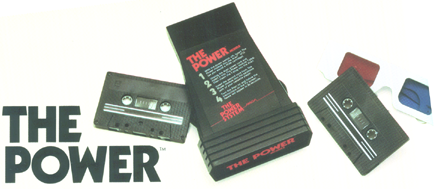


POWER PLAY ARCADE #1



POWER PLAY ARCADE #2



A blurb from the September 1983 issue of Video Review states this game was planned for a fall release with the games S.A.C. Alert, Depth Charge, and Strafe, and priced between $32 and $38. A January 1984 press release announced agreement with Imagic, with Amiga to pay royalties for use of 5 of their games on Power-Play Arcade carts. The games were Atlantis, Cosmic Ark, Demon Attack, Dragonfire, and Star Voyager. The 3 games to be included with this cart were 2 Imagic titles (Demon Attack and Star Voyager) and 1 Telesys title (Fast Food). A similar agreement with Telesys was likely done, as was done with Imagic..


A January 1984 press release announced an agreement with Imagic, with Amiga to pay royalties for use of 5 of their games on Power-Play Arcade carts. The games were Atlantis, Cosmic Ark, Demon Attack, Dragonfire, and Star Voyager. This cart was to include the first 3. A news blurp in the September 1984 issue of Electronic Games also mentions this agreement, and lists Demon Attack, Cosmic Ark, and Dragonfire as 3 potential games. An EPROM was found by Scott Stilphen in 2007 that contained the menu but only lists the first 2 games.


This one had 4 Joyboard games on it: Mogul Maniac, Off Your Rocker, S.A.C. Alert, and Surf's Up. An EPROM was found by Scott Stilphen in 2007 simply labeled as #3, but it only contains the menu software.


S.A.C. ALERT



SCAVENGER HUNT
Originally planned as a pack-in cassette game for Amiga's Power Module
peripheral, and later as 1 of 5 games on Power-Play Arcade cart #2.
According to Video Soft founder Jerry Lawson, "It had very impressive
graphics and was an adventure-type of game" and was either finished or close
to being done. Catalog description: "The perfect game for kids of all ages
- from 6 to 60. The object is to locate each of the items the computer
asks you to find. A comb . An iron. A telephone. Or just about
anything else. Just as easy as you remember it, right? Well, does
'Beware of Dog' sound familiar? How about, 'You'd better be home before
dark'? It'll be just like 'old times'..."



STRAFE
For use with Amiga's Power Module peripheral. Catalog description: "Your
objective: destroy all of the enemy's oil tanks and land-based missile silos.
And, if you can, the central missile battery: the heart of the enemy complex.
But you've got to go it alone. Fly low. Fly high. Through
narrow canyons. Under bridges. Let your instincts be your guide..."

SURF'S UP
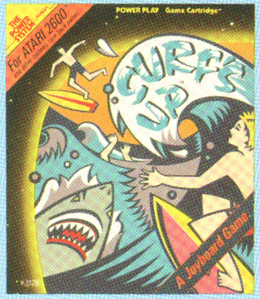


|
ANDROBOT |
Very little was known about this game, until it was discovered by Scott Stilphen in 2007. An ad for the AndroMan (picture #1) shows the “Gamescape” map for AndroMan on the Moon. 6 games were planned, but currently this is the only one that's been found. Picture #2 shows the AndroMan in Atari's FCC testing room.
From programmer Michael Case:
"The only VCS game I did (at Western Tech.) was AndroMan on the Moon (pictures #3-#5). This was one of the games being done for the AndroMan robot. I don't remember much of the plot, but AndroMan was on the moon (I think we used the floor map shown in the advertisements). I think the enemies were supposed to be aliens. AndroMan was supposed to be harvesting minerals on the moon. He would move over bar codes on the map, which signified mines, and then the video game would show him enter the mine (the maze part - picture #4), being attacked by 'moon aliens' along the way. He dropped bombs to kill them. If he got hit, I think he would jerk around or make some noise, which is why the game hangs. After getting further into the mine, the corridor is shown from a first person 3-D view (picture #5), and he is attacked by flying circular shaped 'moon bats'. He can shoot at them using the joystick to control the cursor on the screen. When he makes it to the end, he gets the resources in the mine. He then has to move on the map to return the resources to the base, and so on."

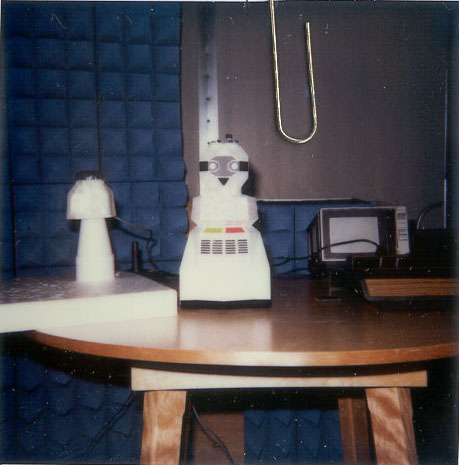



|
ANSWER SOFTWARE |
CONFRONTATION
The 1st picture is


|
(GAMES BY) APOLLO |
KYPHUS
This maze game is set within a pyramid and depicts a man that can be moved through 64 rooms (displayed in 3-D ala Racquetball) connected by doorways. In each room overhead is a strange "cloud" that shoots at the player. A robot also follows you from room to room. In the code are the words "protect", "destroy", and "invoke", and the graphics for what appears to be a monkey. A partial photo of the box appeared on a poster (picture #1) and a full image of the box was
later found in a 1983 issue of Videogiochi (picture #2). 2 unused
cartridge top labels were sold on Ebay in May 2019 for $334 (picture #3). An unlabeled prototype Apollo game was found in 2006 (picture #4) that was later confirmed by programmer Tim Martin to be Kyphus. From Tim Martin:
"This was one of the first projects I had at Apollo on the Atari VCS. To my knowledge it was never finished, as the company closed rather abruptly. Basically the game was a randomly-generated maze of rooms that you explored to search for items needed to score points. I remember there being a 'cloud thing' that would come and attack you. The game play was never complete (that I know of) so I'm not sure what the final game would have been like."
According to Ed Salvo: "Kyphus ended up with that name because it sounded mysterious. We originally thought Kyphus was a distortion of reality, but we looked it up and (kyphos) it's a distortion of the backbone. There was also a sign on the wall in the designers' room wall at Apollo that read 'Kyphus is more than a game - it's a disease'. Talk about viral marketing."




LOST LUGGAGE
The first picture is from Electronic Games 5-84, and shows different colors from the actual release (picture #2).


POMPEII
The only known prototype of this game was archived from Arnie Katz, Bill Kunkel, and Joyce Worley in November 2001 and is not playable (picture #5). Early description is a game involving the perils (of) moving around an active volcano. Several pictures of the box exist - box artwork appeared in the Jan 1983 issue of Electronic Fun with Computers &
Games (picture #1); the same issue also mentioned Pat Roper stating this was originally called Labyrinth. A box was shown in a magazine, taken at a 1983 CES (picture #2). A partial photo of the box appeared on a poster (picture #3). 2 unused cartridge top labels were sold on Ebay in
May 2019 for $339 (picture #4).

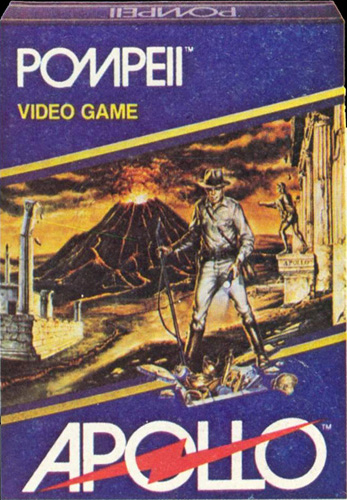



SQUOOSH
Archived from Arnie Katz, Bill Kunkel, and Joyce Worley in November 2001. Description: "You work for the Apollo Grape Company and must stomp grapes without getting stomped yourself. Avoid plunger and falling grapes while turning other grapes into wine". Box artwork appeared in the Jan 1983 issue of Electronic Fun with Computers & Games
(picture #1); the same issue also quotes Pat Roper as saying, "We thought about calling it 'Vats Incredible' or 'The Grape Escape', but decided Squoosh
instead.". 2 prototype versions exist - the earlier version allows you to move
around and jump (picture #2); in the later version grapes can move around and
you can hit the press (#3).



|
ATARI |
THE A-TEAM
Basically the same as Saboteur aside from a graphics make-over. 2
different prototypes exist. According to Saboteur programmer Howard Scott Warshaw, someone else worked on the A-Team version... and yet there's a famous
photo of him at Atari from 1984 with a mohawk 'costume' on. A 8-1-84 status
listing states: "Manuscript and carton typeset, designed. Illustration in
progress. Software complete." A label exists (photo #1),
apparently from Best Electronics.


ALPHA BEAM WITH ERNIE
An Atari Kid’s Library brochure shows a screenshot (picture #1) of what is actually a prototype version (picture #2). The release version (picture #3) doesn’t have lines above and below the space ship.
A 1983 Atari Kid's Library press kit states this was to be available July 1983;
a 1983 2nd Half press kit states this would be available 3rd quarter.
Suggested retail price $34.95.



ASTEROIDS
Early catalog screen depictions (picture #1) showed reserve ship icons in addition to the reserve counter. There is actual code in the program for displaying these icons, but it was disabled - Brad Stewart feels it was probably done as a result of him and Bob Smith trying to squeeze the cart down to 4K, and he forgot to enable it when he was given 8K. The 2nd picture is an actual screenshot showing what it looks like enabled.


ATARI 2000
Designed as a cheaper, all-in-one version of the VCS, by Steve Mayer and Gregg
Squires from Atari's WCI Lab in New York. Originally called the CX2500 and
code-named VAL (for "Value", although it was actually named for Gregg's wife),
it was originally meant to be what the 2600 "JR" eventually became (a low-cost
VCS). A handful of prototypes exist, in both brown (original version from
Atari's New York WCI lab) and blue (revised version from Atari's Sunnyvale lab)
colors. When the concept failed at various consumer clinics, Atari went back to
the drawing board and changed the unit from a brown to a blue-colored unit to
appeal to children (same color scheme as the Kid's Controllers). Carts are
inserted into the back. Both versions included controller jacks, but the
built-in joysticks were poorly-designed (esp. those of the blue version) and the
project was scrapped in favor of what eventually became the 2600 "JR".

ATARI 2500
Bears some resemblance to the CX2000 prototypes. Designed in 1982,
possibly in Sunnyvale. 2 different-colored prototypes have been found - light
gray and black. The built-in controllers appear identical to the CX2700s,
although there's no hardware for them internally. Also, the motherboard is
identical to the 2600A (except for the toggle switches), so it includes external controller ports for using other
controllers!




ATARI REMOTE CONTROL
VCS/2700
A completely redesigned VCS (much like the 5200 and 7800) that featured wireless
controllers that integrated the functions of both a joystick and a paddle, and
included buttons for reset and select. A few fully-functional systems (complete
with box) were even produced, but unfortunately, plans to release it were
scrapped when it was discovered the remote controllers would affect any other
2700 system within a 1,000' radius! From
Jerry Jessop:
"The ones that were used for the show had the paddles disabled. The paddles were working, but not to the resolution (0-255) and as reliable as we wanted. There was a ton of 'jitter' in the paddles, even in the pilot stage. Another stupid project and product that should have been killed long before it ever got to this stage. Unfortunately the legacy of the 'wedge' design, controller storage compartment, and the unplayable side firing controllers lived on in the next disaster evolution, the 5200."


ATARI 2900
Atari Industrial designer William Renteria created what appeared to be an early
design of the Remote Control Video Computer System. Much like that design, it
featured a rear controller storage compartment, but with 4 controller ports as
well as a 2nd cartridge port.


BATTLEZONE
The prototype version (picture #1) shown at the 1983 Summer CES had blue
mountaintops and no sunset, compared to the release version (picture #2).


BIG BIRD'S EGG CATCH
Help Big Bird catch eggs ala Kaboom. One of a series of Children's
Computer Workshop games involving Jim Henson's Muppets and designed for use with
the Kid's Controller. A 1983 Atari Kid's Library press kit states this was
to be available July 1983; a 1983 2nd Half press kit states this would be
available 3rd quarter. Suggested retail price $34.95. Atari's 1983 in-house CED promo showed an alternate
keyboard overlay (picture #1). Picture #2 is the released overlay version.


CHOPLIFTER
Listed on Atari's Master Part Number List and a product assembly listing shows
it was to be an 8K game. Original game designed by Dan Gorlin for the
Apple II. Converted into a coin-op by Sega in 1985. A sell sheet for
this title can be found in Atari's 1983 CES press kit (picture #1). Scheduled for an
April 1983 release.
Programmed by GCC, this was first mentioned in the November 1983/February 1984
issue of Atari Age
(picture #2), and later in the February 1984 issue of
Video Games Player
(picture #3) and June 1984 issue of
Computer Games (picture #4). A box was shown in an
obscure French catalog (pictures #5 and #6). A May 1984 internal memo states "Dates may be pulled
in after release of 2600 Track and Field". An internal status listing
dated 8-1-84 states "Not worked on. No software." Doug Macrae of GCC
claims this was completed but Atari didn't ship it. An incomplete
prototype was found in November 2023 (pictures #7-#9).






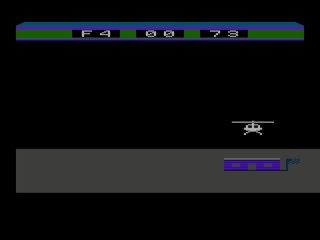
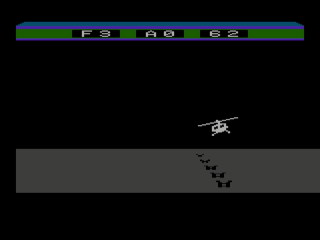

COMBAT TWO
Programmed by GCC, this was an updated version of Combat that was first mentioned in the September/October 1982 issue of Atari Age. It was originally planned for release in December 1982, and was listed in the rare 1982 Atari catalog, “A GUIDE TO THE ATARI STARS: 70 Game Program Cartridges for the Atari 2600 Video Computer System Game!” (Rev F),
along with an artistic rendering of the screen and new box art (oddly enough, the title, description, and even the CX number are for the original Combat).
Steve Golson of GCC stated it was referred to as "Combat II" within GCC during
1982-83. It ultimately fell victim to Atari's Marketing department, and its cancellation was confirmed in the November 1983/February 1984 issue of Atari Age. The only known prototype was obtained in
1999 from the former founder and editor of Atari Age, Steve Morgenstern. The game seems complete except for a few finishing touches, but it does include a level editor!





COOKIE MONSTER MUNCH




COUNTERMEASURE


CRAZY CLIMBER
Pictured in the
January/February 1983 issue of
Atari Age with a 2nd-style label
(photo #1), but this was most likely an advertising “prop” that so far hasn't been found.
Also, the artwork on the label is a variation of the artwork used on the
released version (photo #2).
According to programmer Joe Gaucher, after he got the buildings and data tables created, he handed it over to Alex Leavens to finish, since he had to start on RealSports Basketball. Leavens was a junior programmer at Roklan at the time, who soon ran off to California w/o finishing the game! Gaucher had to immediately stop work on R.S. Basketball to finish Crazy Climber since it was due. Gaucher had to break into Leaven's apartment to get the game code, and after figuring out Leaven's code, he got the game to a point where it ran and didn't crash, but at that point Roklan VP Ronald Borta told Gaucher to stop work on it and shipped it to Atari as-is. Atari was likely unhappy with this unpolished version which probably explains why they decided to do a limited release of it as an Atari Age magazine exclusive to Atari Club members (for $26.95).


DEMONS TO DIAMONDS
The original working title for this game was "Hot Rox".
The #5 (fall/winter) issue of A.N.A.L.O.G.
(pg. 37 - picture #1) featured a list of Atari's upcoming 1982 releases and mentions
Hot Rox as a tentative later release. A
1981 Canadian brochure (picture #2) states that it would be available in April
(1982).
Box art can be seen on the inside cover of Atari's 1982 Rev D and E catalogs (pictures #3 and #4), as well as the 2nd revision of the Log Book. Some prototypes have surfaced with this name as well.


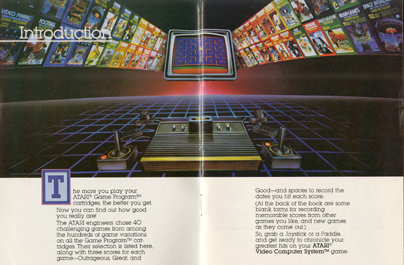

DONALD DUCK'S SPEEDBOAT
One of 3 games featuring Disney characters that was never released, although it
was announced by Polyvox (under the name A Lancha do Pato Donald) for release in
Brazil. From a 1983 CES Press Release: "A speedboat obstacle course is always an adventure with Donald Duck at the controls. Donald must avoid rocks, whirlpools, seaweed, fish, and the bobbing buoys of nephews: Huey, Dewey, and Louie. The faster he finishes the race, the more points he scores. The multiple obstacle screens and game variations add to
the game-play challenge, and the graphics and music make this an enjoyable game for kids from ages 5-10." Originally scheduled to be released in September of 1983. Suggested Retail Price: $30.45. The tentative title for it was "Donald Duck's Regatta" and a prototype with this name has been found. A promo box exists (picture #1), and the full artwork was shown in a Brazilian catalog (picture #2).


THE DUKES OF HAZZARD
The game was first mentioned in the Atari Age (Nov/Dec 1982 issue). This version (pictures #5 and #6) came 3 years after Atari's 1st attempt (picture #7). Unlike most of the other prototypes/pre-production games, this was actually produced on ROM chips (using the new Chip-On-Board design), and in large quantities... which is odd since
programmer Mark Hahn states the game wasn't finished! Atari apparently was just about to slap the labels on thousands of Dukes cartridges – finished or not – before deciding against releasing it at the last minute; the reason Atari gave Hahn was the game's graphics weren't on part with other releases at that time. Notice of its cancellation was announced in the Sept/Oct 1983 issue of
Atari Age.
A promotional box exists (picture #1), along with 3 pieces of concept artwork by
Warren Chang (pictures #2 - #4).
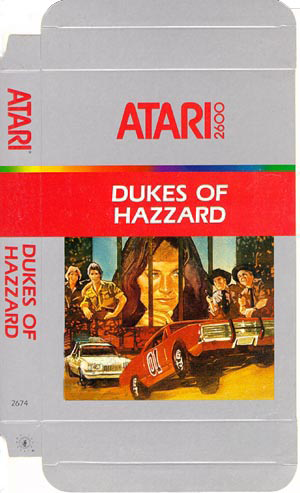






DUMBO'S FLYING CIRCUS




E.T the Extra-Terrestrial



ELEVATOR ACTION



FOXBAT
"Yes the producers of Foxbat originally wanted a 2600 game because that was where the money was at. I'm not for sure who was ever assigned the title because I think almost all of the 2600 programmers just said they weren't interested. When they asked me, I said yes, but I was only interested in doing 5200 stuff. One of the managers suggested we do something like Eastern Front on the 800 and we got permission from Chris Crawford to use his code. When we showed the Hollywood guys the difference in the graphics that were possible, they went right along with it. I never really got any code of my own going before the project was cancelled."
Here is a copy of The Foxbat Strategy movie treatment, courtesy of Keithen. Howard Scott Warshaw confirmed Foxbat wasn't his game, nor was it ever a code name for Raiders of the Lost Ark.




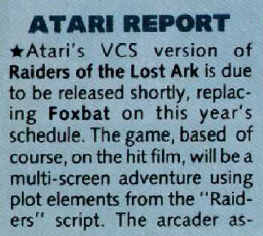
FROG POND












G1 Light Gun



GALAXIAN

GATO

THE GRADUATE COMPUTER
Announced on February 9th, 1983. This was to be Atari's entry into the emerging
VCS
keyboard market. The unit plugged into the VCS cart port and was self-contained, much like how the 5200 VCS adapter works (using the base system for power and display only). It was actually developed outside of Atari, by a company called Peripheral Visions, Inc., which was formed in late 1982 by 3 former Commodore VIC-20/C-64
engineers (Charles Winterble, Al Charpentier, and Bob Yannes). Winterble conceived of the idea to turn the VCS into a computer, and they called it "My First Computer". Designed with a $29.95 price, it was to feature a membrane computer and have BASIC built-in. PVI approached Ray Kassar with the idea, and he agreed to purchase it for a million dollars. Under the deal, PVI would develop the hardware and Atari the software. The product was given the model number
CX-3000 and was known by several names during its development ("My First Computer", "2600 Computer", "The Graduate")
while undergoing several changes (case designs, features, price points, etc).
The designers invented a 3-cycle "Bus Stuff" mode to achieve a faster TIA register update rate. This works by loading Y with $FF at the beginning of the kernel, and then having the 6507 execute 3-cycle STY $REG instructions. At the critical moment when the $FF is being written, The Graduate hardware steps in and overdrives the desired value on the bus.
It was shown at the 1983
Summer CES show, along with the printer and wafer drive, before ultimately being cancelled by James Morgan when he took over as the new CEO of Atari in September 1983. An ongoing lawsuit against PVI by Commodore was likely the main motivating reason for its cancellation.
Soon after PVI was formed, Jack Tramiel heard PVI approached Atari and filed a ("exploratory") lawsuit against them, claiming they stole trade secrets. PVI were forced to disclose details of their VCS project. Tramiel insisted that was his product, and pursued the case. PVI eventually won, but it cost them several years and approximately $300,000
A February 1983 press release states the keyboard would be available by 3rd Quarter nationally. It featured 8K of memory (expandable up to 32K) and 56 raised keys (although early drawings and even the first mock-up show only 53 keys), plus a suggested retail price of less than $90. The side cart slot ("expansion port") could also be used for optional peripherals such as a portable cassette recorder, printers, disk drives, and modems. The same press kit mentions the official name was to be "My First Computer", even though "2600 Computer" is shown as being trademarked.
Photos of the unit were shown in both the Feb 1983 press kit (picture #2), the May/June 1983 issue of Atari Age (picture #3), and the July 1983 issue of Electronic Fun with Computers & Games (page 47, picture #4). Note the power jack on the back edge of the unit in those photos. According to hardware designer Regan Cheng, the unit shown was actually a mock-up (the keys were simply glued on). The May 1983 issue of Video Games covered the NYC Toy Fair and showed a photo of the 2600 Computer (dubbed "My First Computer") running what might be Typo Attack (picture #5). The December/January 1984 issue of Computer Games (pg. 9) shows what might be the title screen for Robotron (picture #6)!
Another design was first shown in Atari's 1983 "Ticket to the Stars" catalog (picture #7) - note the full-size keyboard and the cartridge port at the top. A photo appeared in the September issue of Electronic Fun with Computers & Games (page 36, picture #8). Note the extra connectors on the right side and the different keyboard arrangement. This same variation later appeared at the 2024 PRGE, this time featuring an "Atari 2600 Graduate" label (picture #9). Greg McLemore currently owns this and states this is an actual prototype and not a mock-up!
A 1983 TV commercial showed yet another design and keyboard arrangement (picture #10); a better photo from that spot appeared in Atari's June 1983 "2nd Half" press kit (picture #11) and clearly shows the name "Atari 2600 Computer" on the upper-left, a 55-keymembrane keyboard, and a higher cartridge port on top. The same press kit also include several flyers which showed drawings for both the keyboard (reflecting the earlier design - picture #12) and peripherals (picture #13). The keyboard drawing shows yet another design, with raised keys and the cartridge port back on the left side. The peripherals are:
|
I/O MODULE + 8K RAM Another flyer listed 9 software titles (in 4 different categories) were slated to be available by October: PROGRAMMING - $40.95 each:
|
A June 1983 press kit refers to it as "The Graduate" (also trademarked) and states the unit had 8K of built-in Microsoft BASIC. The accompanying photos show the keyboard and optional devices almost exactly the same as depicted on the earlier flyer (picture #14). A photo of the earlier design (along with the optional devices) appeared in the September 1983 issue of Video Games (picture #15). Part of this same photo appears in the August 1983 issue of Your Computer (pg. 42, picture #16).
















GRAVITAR
An ad for the Atari VCS Cartridge Adaptor featured a Gravitar box with alternate
artwork.

GROVER'S MUSIC MAKER
Help Grover to dance along to 1 of 20 different children's songs.
One of the Kid's Library series of Children's Computer Workshop games involving
Jim Henson's Muppets and designed for use with the Kid's Controller. The
early working titles for this game were "Big Bird's Music Maker", and "Monkey
Music". Monkey Music featured a monkey instead of Grover, with 17 game
variations but no songs or a title screen, except for a 1982 copyright date (no
mention of CCW). When it became a CCW game, Grover was added, along with a
title screen, and 21 variations, with 20 songs. The latest known
version is dated 1-18-83 and has some minor differences (the curtain is missing,
but a stage is now present. Plus there's only 19 songs). Planned for
a May 1983 release, according to a news blurb in the April 1983 issue of
Videogaming Illustrated (pg. 10). Shown at the 1983 Winter CES show. A
1983 Atari Kid's Library press kit states this was to be available July 1983.
Suggested retail price $34.95. Early ads showed an early (red) box design
for the game (see picture).
The earliest-found prototype, "Monkey Music", is dated 8-18-82 and was pretty far along in development before getting a CCW remake with Grover as the main character. Well, 5 months later and there still wasn't much difference beyond cosmetic ones. There still wasn't a game. All players could do was either play random notes (with the option to have them played back) or select different songs to be played. The most obvious gameplay to implement would have been a Simon (AKA Atari's Touch Me) knockoff, with the player copying Grover's moves. Without that, all you have is basically a DTMF phone keypad. It's no surprise kids play-testing it were rumored to have been bored after a few minutes. Much like the Doodle City option in I, Robot, Grover is the "Ungame". After spending over 6 months on a kid's game and still not having a game, it's really no surprise why Atari didn't release this or spend any more time and money on it, and Grover had been promoted along with the other CCW titles right from the beginning. We can thank programmer Stephan Keith for that, who next went on to spend (waste) another 6 months trying to do a version of Xevious for the VCS, which ended up in the trash when Tod Frye took over and started over.
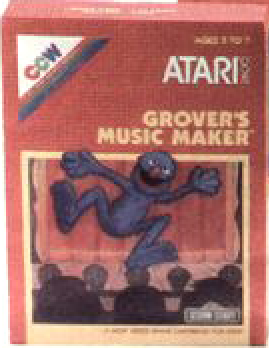


KID'S CONTROLLER


MINDLINK
Based on the same principle as Synapse's RELAX system, the MindLink would let
you control games with your thoughts. In reality, the controller responds to
facial muscle movements. The system consisted of a headband with 3 sensors on it
which was attached to a transmitter, which was powered by a 9-volt battery. The
receiver module plugged into the VCS and translated the incoming "brainwaves"
into usable game inputs. 3 MindLink games have been found to date: Bionic
Breakthrough, Mind Maze, and Telepathy. An internal status listing dated 8-1-84
states "Manual and design complete." John Skruch
stated in the January 1996 issue of Ultimate Gamer, "Only paddle-type
games were designed to be used with the MindLink, including a skiing game, and a
Breakout variant (Bionic Breakthrough). Two distinct versions of the ML were to
be made- one for the VCS and 7800, and one for the 8-bit computers." He also
suggested the reason for its cancellation was because the suggested retail price
was too high ($70-$80). From Tom Palecki:
"Barry Marshall did the design for the MindLink Head Band Controller. I don’t remember how it came about, but I ended up designing the logo for that controller, which I worked up based visually on what a brain wave scan might look like in letter form."
The controller was shown at the 1984 Summer CES show and planned for release in the 3rd Quarter of 1984, along with 3 cartridges, but was cancelled after Tramiel's takeover. Retail price was to be under $100. The October 1984 issue of Electronic Games (pg. 13) states it would retail for about $79. Photo #1 is a marketing photo. Photos #2 and #3 appeared in Atari's 1984 'New Age' press kit. Photo #4 is a 1984 brochure. Photos #5 and #6 show an early prototype design. Photos #7 and #8 is the final prototype design. Photo #9 shows another early design being used to play what appears to be a version of Telepathy. Photos #10 - #13 appeared in the Ultimate Gamer article. Photos #14 - #16 are the only 3 games that were designed for it - Bionic Breakthrough (a variant of Super Breakout that was to be the pack-in game), Mind Maze, and Telepathy (which was created as a demo to show what types of games were possible).













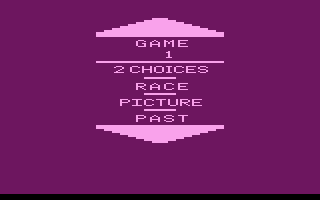
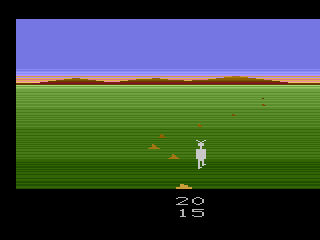
MISS PIGGY'S WEDDING
Was to be the 2nd "action" game cartridge featuring Jim Henson's Muppets characters (after Pigs in Space).
4 different prototypes of this game are known to exist (pictures #2-#5), none of which are complete,
although the version shown at the Summer 1983 CES was somewhat playable. The photo below is from a 1983 press kit, with the following description: "The wedding bells are soon to ring... until Kermit, the reluctant groom, changes his mind and leaves Miss Piggy at the altar. The church becomes a video maze, with Kermit on the run and Miss Piggy in hot pursuit. The
chase becomes even more elaborate when the wedding guests move about. Players can choose to be either Miss Piggy or Kermit in this Atari-The Muppets game, designed to be enjoyed by all age groups."





OSCAR'S TRASH RACE




PAC-MAN
Early screenshot (picture #1) shown in the 1982 green poster/catalog as well as
a rare 1981 rev D catalog variant show a black background (like the arcade version),
but with the maze layout vertically flipped. A variation of this (picture #2) was shown in magazines such as Electronic Games (note the missing power pills and multicolored reserve lives indicators), even well after the game was released! A more
accurate version with the actual maze layout was shown on the box (picture #3), but it still featured tilted monsters. A hacked version of the original was made by Jason Parlee
in 2002 (LINK) in an effort to match this photo (picture #4).
VCS Pac-Man programmer Tod Frye has given conflicting answers when asked about the color scheme he used. Here are his most recent comments:
"We were still new at doing advanced arcade ports to the VCS. There was Space Invaders and Asteroids - both of those used their own color schemes and Asteroids looked and played different from the arcade. I wanted to add more color to the maze instead of black and blue, so I chose the colors. The maze was also very difficult to implement, so the exits were placed on the tops and bottoms instead of the sides. My primary focus was on the
game play and making sure the game mechanics of the arcade were in the VCS title as close as could be done."
"If I have one regret (and I have many), it is the color scheme. I truly wish I had gone for the blue maze on the black background. IIRC (and perhaps I’d – likely more so than anyone else possibly can) I was influenced by the color scheme Space Invaders used, where the ‘variations’ used color schemes different from the arcade version."


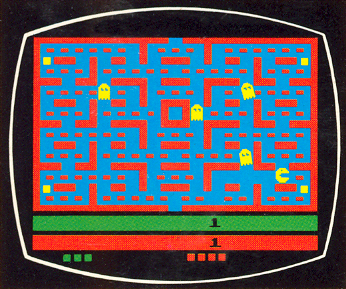


PRO-LINE JOYSTICK
Originally one of Atari's "Pro-Line" Advanced Controllers. A company flyer (picture #1) notes it was coming in July 1983, with a photo showing "ATARI SERIES 2000 PRO-LINE JOYSTICK" molded into the top of the plastic base. However, this version was never released. When the 7800 was finally released in 1986, it included a slight variant of it - in place of the molded plastic was a metal plate on the base with "Atari" on it, and the fire buttons were modified for 7800 games that required 2 fire
buttons. Also released separately for the XL computers (with similar packaging - picture #2). A prototype controller has been found that's similar to the one shown on the flyer, but it doesn't have the Series 2000 text or the same joystick knob, but there's a large registered mark (R) after "ATARI"
(picture #3). This is the same version that appeared in Atari ads in
European magazines such as TV Gamer (picture #4)




PUFFER
The Puffer project was conceived in late 1982 with an original projected release date for
fall 1983. It was a peripheral controller in the form of an exercise bike for any VCS,
5200, or Atari home computer. It plugs into the joystick port and controls the action of the special video games by how fast the exercise bike is pedaled and by steering." A set of hand controllers replaced the original hand grips. A magnet attached to the wheel monitored the wheel speed and a Hall effect sensor detected the passing
magnet which can be read by the computer to calculate the wheel speed. The housing for the sensor was also the junction box for the hand controller cables and the computer cable. The computer required only one cable to be connected to a joystick input. The Home Model was planned for release concept was proven with the coin-op Pro Model. A company memo dated 9-26-83 states a prototype was built in February 1983, 2 games were developed (River Boat and Pole Position), a preliminary business plan
was completed in July 1983, and Market Research (focus groups) was currently being done. The package included 1 game, 2 controls, and a folding exercise bike. Estimated price was $68, with an optional upgrade kit for existing bike owners for $22. Games were also being developed for both the Atari 8-bit home computer and 5200 - Jungle River Cruise (aka River Boat) and Tumbleweeds. The project was cancelled in late 1983 due to the poor market conditions (i.e. the crash), but was resurrected in
early 1984 when Atari became a sponsor of the 1984 Olympic Games. The plan was to aggressively market it during the Games, but the product was cancelled for good with Tramiel's takeover of Atari.


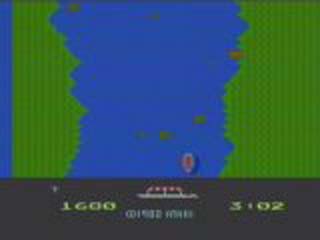

RAIDERS OF THE LOST ARK
A screenshot showing graphics artist Jerome M. Domurat’s initials (as a graphic “logo”, picture #1) in the mesa field appeared in several publications in at least 8 separate instances:
Consumer’s Guide book, How to Win at Home Video Games, (page 56)
Electronic Fun with Computers & Games (November 1982, page 64 - picture is flipped horizontally)
Electronic Games (November 1982, page 8)
Electronic Games (March 1984, page 24 - picture is upside-down)
Joystik (November 1982, page 5, and December 1982, page 56 – picture is flipped horizontally)
Video Review (January 1983, page 73)
Videogaming Illustrated (December 1982, page 59)
Book, Videospelletjes - Complete Handleiding Voor Winnaars, (by Arnie Katz, Bill Kunkel and Kees van Toorn, page 52)
The graphics for the initials were removed in the released version, although some of the code for handling it is still in the program. From Jerome Domurat:
"I'm pretty sure what happened was, there was a problem with the game's scoring when it was added in. It might have doubled the score or something like that, so Howard was forced to remove it. We were both kinda bummed about it, so when E.T. came along we threw a bunch in :) Howard used part of the Raiders Easter egg code in E.T. though, because he was convinced that there must have been something else causing the problem, and he figured if the game testers came back with a problem, then the code was really to blame, but nothing came back about it."
A fake, pixel-perfect screenshot (picture #2) was created by Scott Stilphen to more clearly illustrate the photos (pictures #17 and #18), although the colors are wrong due to imperfect emulation.
The photo is famous for showing graphics artist Jerome M. Domurat’s initials (shown as a graphic “logo”) in the mesa field. For reasons unknown, this graphic was removed in the released version, although there are some "holes" in the program that hint where it belonged and how it was to be used. A fake, pixel-perfect screenshot (picture #2) was created by Scott Stilphen to more clearly illustrate the photo (picture #3), although the colors are wrong due to imperfect emulation.
An artist's rendition in an Atari’s VCS Sales Planner brochure (picture #3) and an Atari dealer ad (picture #4) depicts a key on the Entrance screen. As it turns out, a 2nd key exists in the program which cannot be found in the game. It seems the key was originally going to appear on the Entrance screen as shown, but due to the way the kernel displays objects, it couldn’t be used. This is most likely why it now appears in a Marketplace basket. This was mentioned in the May 1984 issue of TV Gamer. A modified version of the code by Luc Pycke shows what the key would have looked like, had it been implemented (picture #5).





REALSPORTS BASEBALL "VC"
1 of the 4 proposed modified games for the unreleased "Voice Controller". This
was apparently demoed at the 1983 Chicago CES show. Box packaging design
was done by Evelyn Seto.


REALSPORTS BASKETBALL
First mentioned in the 1982 Atari Rev. F catalog - description: "The basketball court is three-dimensional - the closer the players get to you, the larger they become. Pass, shoot, block shots and even dunk! The two-on-two action lets you play pick and roll, rebound, and then go back up for the score! Play against the computer or with a friend (Estimated availability April 1983). The 1983 Atari Rev. A catalog featured a screenshot and a shorter description: "Pass, shoot, block shots and
dunk! On this three-dimensional court, the two-on-two action lets you play pick and roll, rebound, and then go back up for the score! Challenge the computer or a friend (available fall
1983)." Later shown in a 1989 catalog with the same screenshot (picture #1) but with the same CX number as the original Basketball, and with a different description: "Fast-breaking, board-pounding basketball action. Play great defense, steal the ball, drive down court for the winning point as the clock expires! Play against a friend or the computer." A prototype (pictures #2 and #3) was obtained from the former editor of Atari Age, Steve Morgenstern, which seems complete except for a few finishing touches, and the referee is missing (but the graphics for him are in the code - picture #4). According to programmer Joe Gaucher, the referee was interactive and would mess with the
players and run alongside them, but that he had to take him out due to memory constraints. Atari canceled the game before he finished it. An
ad for the 5200 VCS Cartridge Adaptor featured a promo box (picture #5), and
years later a promo box was found (picture #6).




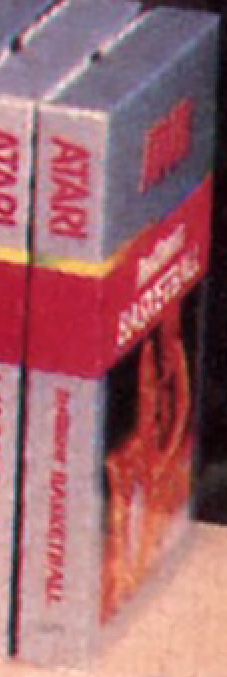

REALSPORTS SOCCER
Alternate box artwork (picture #1) appeared in the September 1983 issue of Electronic Games (page 34), which was actually used for the 5200 version of RealSports Soccer (picture #2), and not the non-Realsports-labeled Soccer version, which had different artwork. Picture #3
is the artwork used in the released
VCS
version.


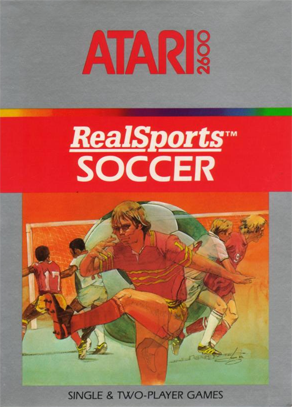
SNOOPY AND THE RED BARON




SPACE INVADERS
Early catalogs pictured a completely different version on the introduction page (picture #1), or one with a 5-digit score counter (picture #2), while the entry description page showed an accurate version compared to the release (picture #3).



STAR RAIDERS "VC"
1 of the 4 proposed modified games for the unreleased "Voice Controller". Box packaging design
was done by Evelyn Seto.
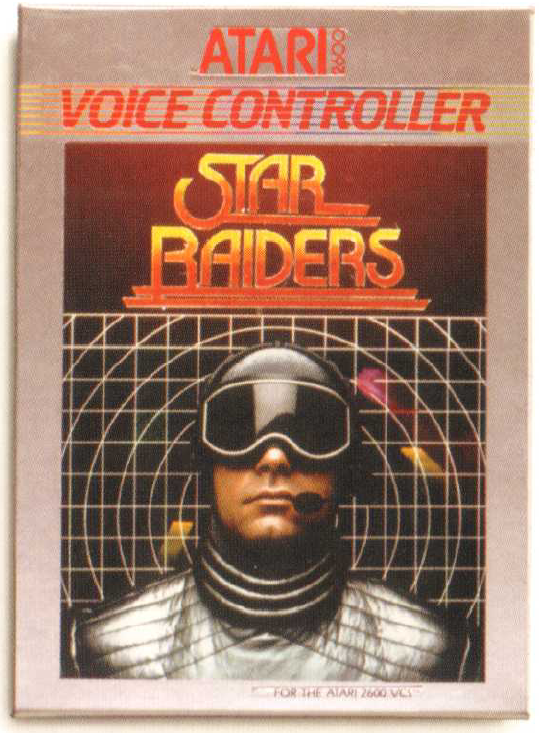

STREET RACER
This photo (picture #1) appears on the original 1977 system box. While all of the screenshots on the box are artist renderings, this is the only one that is noticeably different from the actual game (picture #2).

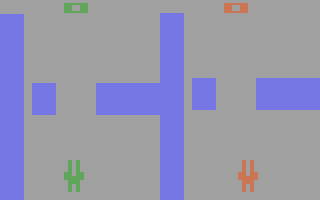
SUBMARINE COMMANDER
This alternate
artwork was intended for an Atari-released
version of the game.

SUPER BASEBALL
This alternate box was shown in a commercial featuring Ozzie Smith. The game is likely Super Baseball, although the artwork doesn't match any Atari versions. The box shown for the 7800 version was also different (it uses the same artwork but the title is RealSports Baseball instead
of Baseball).

SWORDQUEST AIRWORLD
Although the game was never finished, 2 different artwork pictures were circulated – one a small box art picture from an early ad (picture #1) and the other a painting that was found within Atari when it closed up, which may have ended up being the final art (picture #2). Note the Philosopher’s Stone just under the rider’s left arm, which was to be the prize for that game’s contest. See the
SwordQuest Revisited article for more info.
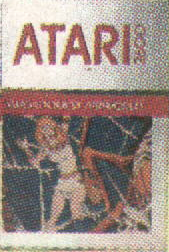

SWORDQUEST WATERWORLD

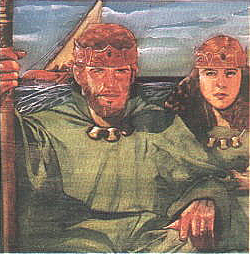



TEMPEST
A promo box (picture #1) exists for this game, along with some concept artwork (picture #2). At least 2 different prototypes exist. The earlier version, dated 1-5-84 (picture #3), is very similar to the later version, dated 2-28-84 (picture #4), except that it lacks a copyright and a title screen. Both versions are incomplete, and only show one layout. A photo of the box also appeared in a photo in the March 1983 issue of
Atari Club Magazin (pictures #5 and #6). As of now, the only person who has a copy of the later version is John Skruch (both appeared in an article in the January 1996 issue of Ultimate Gamer). Due to its CX (part) #, this may have been slated to become
an Atari Club exclusive release title.






TRACK & FIELD
The PAL version was to be called Los Angeles 1984 Games - both a photocopy of the cart's label with this name (and correct CX# - picture #1)) and a PAL prototype (picture #3) were found. Konami is credited on the released label as well (picture #2), so apparently Atari bought the home rights for Track & Field and planned to use it as a tie-in to the 1984 Olympics (which Atari was a sponsor of) but for whatever reason decided not to. Picture #4 is a screenshot of the released
version.




TRAK-BALL CONTROLLER
One of Atari's "Pro-Line" Advanced Controllers. A company flyer (picture #1) notes it was "coming in June
1983", with a photo showing "ATARI 2600 TRAK-BALL" and with fire buttons that are full concave. A marketing photo (picture #2) clearly shows the letters being molded into the top of the plastic case. Another photo (picture #3) showed it having red fire buttons, which none of the released versions had. Yet another photo appeared on the back cover of the May/June 1983 issue of
Atari Age (picture #4), showing the text in white lettering. However, none of the 4 released versions looked exactly like the marketing photos.
The version originally released (picture #5) has buttons that aren't fully concave, the lines radiating from the ball on the top case aren't as long, and the text on top isn't the same ("ATARI 2600" is underlined on the left and is smaller, with "PRO-LINE TRAK-BALL" to the right). Also, the text isn't molded in the case but instead printed in raised, chrome lettering on a black sticker. Although the case has a hole and markings on the left side for a Trak-Ball/joystick mode switch, the pcb design doesn't support it (and the hole is covered up). The sticker on the bottom notes that it was manufactured at Atari's El Paso, TX plant.
The 2nd released version (picture #6) has a white base and different text ("ATARI" on the left with no logo, and "TRAK-BALL" on the right) and the pcb has the mode switch, although Atari never released a VCS game that supported Trak-Ball (i.e. analog) mode. The sticker on the bottom notes that it was manufactured in Mexico.
A 3rd version was later released with a redesigned case, a black ball, triangular fire buttons, and a silver plate across the top with black lettering printed on it (picture #7). The mode switch is now on the back and is marked "JS" (for joystick) and "TB" (for Trak-Ball). Note that there are 2 different (internal) versions of this model as well - the 1st is compatible with the CX-22; the 2nd is compatible with the Atari ST mouse (some jumpers were added to the board inside). The only way to tell which version you have is to either try it, or open it up and look for the jumpers.
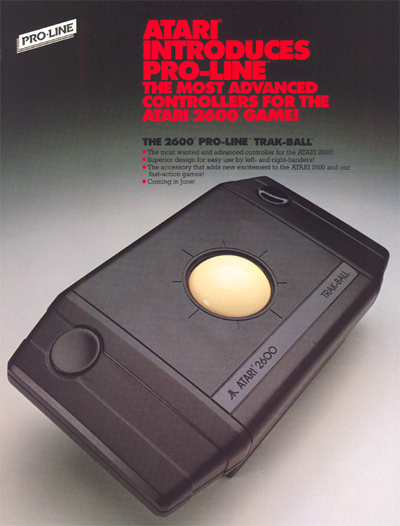






VOICE CONTROLLER
This was a joint-collaboration between Atari and Milton Bradley, with MB to
develop a version of their TI MBX Expander speech synthesis and voice
recognition system for the VCS and 5200. It used a combination
headset/microphone which enabled players to control games by voice commands .
Larry Karr of SCA Data Systems Inc. was also involved with developing the
technology. It was originally called the Voice Commander, and a drawing
was first shown in Atari's 1983 "Ticket to the Stars" catalog (picture #1).
A similar drawing appeared in Atari's June 1983 "2nd Half" press kit, and it was
now renamed the Voice Controller (picture #2). An actual photo of the unit
was included in Atari's June 1983 press kit (picture #3), which differed from
the drawings, and the accompanying letter stated it was demoed at the 1983
Chicago Summer CES show using a version of RealSports Baseball! The unit
included a combination headset+microphone, and the letter mentioned it would be available by October
1983 and retail for $99.95. 3 more games - Battlezone, Berzerk, and Star
Raiders - would be available at launch. The letter also mentioned the unit
"must be reprogrammed each time the is reinserted", so it apparently didn't
retain the voice commands when you turn it off. A 1983 TV commercial
referred to as a "voice module" and it resembled the earlier drawings (pictures #4
and #5). A photo of the earlier design appeared in the September 1983 issue of Video Games (picture #6).
Considering how very little press coverage it got from the CES demonstration,
and how quickly players would have been aggravated having to reprogram it,
especially for more complicated games like RS Baseball and Star Raiders, it's no
surprise Atari decided to drop the project. Milton Bradley was also to
develop a total of 18 (!) cartridges over 3 years, with most to incorporate use
of the Voice Commander, but when Atari backed out, MB sued them for breach of
contract. No prototype or even a mock-up of it has been found.
Atari's case design (by Regan Cheng) was eventually reused for their 2600 "JR"
system (FAQ and picture #7).
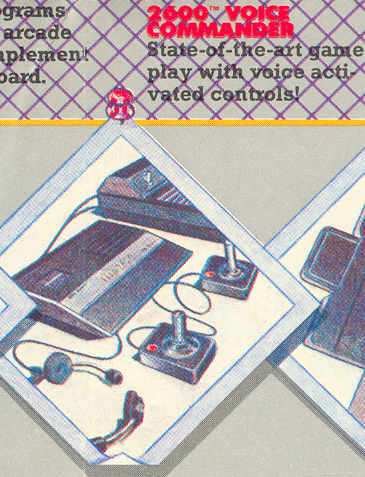






WARLORDS
Different box artwork (picture #2) was initially shown in early catalogs. Atari programmer Jim Huether was actually the artist's model for the released version (picture #2).


XEVIOUS
A box (picture #1) was show for this at the 1983 Winter CES, which is identical
to the 7800 artwork (picture #2).
An early attempt (picture #3) was done by Stephan R. Keith, who was initially assigned to port this (footage of it exists). Keith was part of Steve Wright's group. After wasting over 6 months trying to make a kid's game (Grover's Music Maker) that wasn't released, Keith then spent close to another 6 months trying to do this version, with the same results. Keith's version was shown on Atari's 2nd Quarter 1983 New Releases video. What existed at that point looked awful, even for an incomplete prototype, and Keith's comments about it ("If you play easy, the game gets easy. If you play rough, the game gets rough") make no sense because that's not how Xevious plays. The arcade game is largely pattern-based with enemies and objects always appearing in the same places. The only real randomness is the enemy's shots towards you as you're moving around. How do you even play easy? You either shoot things or you don't (and if you don't, you won't last long). The landscape scrolls at a constant speed, so it's not as if you can fly faster or slower. And the prototype footage shown only shows your ship, the ship's bomb target, and a blotchy scrolling "landscape". There's no enemies or sounds (the sounds in the video are from the arcade version), so there's no gameplay whatsoever in his prototype at that point.
At some point, Tod Frye took over the project (or rather, started over). From Frye: "(SwordQuest) AirWorld did get started, and I was digging it, but I got asked to port Xevious to the 2600 after 2 other programmers gave up on it." At least 5 different prototypes of Frye's version have been found (pictures #4-#6), which include some of the more distinctive features, such as the rotating mirrors and the giant bird geoglyph. The latest version (found in 2015) is nearly complete and has most (all?) of the features from the arcade version. In "Once Upon Atari" (The Agony and the Ecstacy), Tod Frye talks about working on the game: "They (Atari) were having a problem getting a programmer to do 2600 Xevious. Xevious was a very graphically active game in the arcades, and the 2600 is not really a very graphically active machine. So I went home. I smoked this joint with a little psilocybin and a little cocaine in it, and all of a sudden sprang full forth in my mind exactly how to do it. And that was the moment of inspiration. And it really took 3 months of basically clerical work to code it out." The game was later included on the Atari Flashback Portable 2017 model.
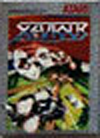





YARS’ REVENGE
This early catalog screen depiction (picture #1) shows both the Zorlon cannon and the Neutral Zone (referred to as the "rainbow ion zone" in the first Atari Age) as being comprised of multi-colored horizontal lines, whereas the game uses actual programming code (picture #2) At certain points in the released version, the Zorlon cannon has a similar appearance, except that it is
pink in color (picture #3). Picture #4 is unused concept artwork by Hiro
Kimura.




ZOO KEEPER
Version of the arcade game. Mentioned in the March/April 1984 issue of Atari Age (pg. 13 - picture #1). This was to be a SARA "SuperChip" cartridge. An internal status listing from some time in 1984 lists the game as an unscheduled option (picture #2), with the name John R. (John Russell?) attached to it. According to programmer Christopher Omarzu, this was "90%
complete". Sound designer Robert Vieira believes Omarzu got over the most difficult hurdle - making the animals move up, down, sideways, and upside-down as they ran around the cage (something about flipping playfield data). The game was never finished as far as he can remember, before Atari killed it off in early 1984. Vieira made his sound code available to the community in early 2005, and a binary was created (by Ken Van Mersbergen and Thomas Jentzsch) that plays 18 different sound effects and
pieces of music. Graphics artist Courtney Granner provided some footage of his character sprite animations in early 2008. No other materials have been found to date. Check out this video to hear and see all the sounds effects and graphics that have been found. Originally called "King Crab", Zoo Keeper was one of the few American-designed games that Taito released (with "Space Dungeon" and "Qix" being two
others), which is interesting, since the player's characters from Elevator Action and Zoo Keeper (both Taito games) are very similar to each other (pictures #3 and #4).



|
BOMB |
SPLENDOUR
Catalog description: “Jaws bit and flight ambitiously in the ocean. Time is limited and points will be given when the jaws clear up surroundings, do not miss the bombs. Two players can play this game alternatively.”

|
CBS ELECTRONICS |
KICK-MAN
Announced at the 1983 CES. 2 different box artwork were shown - one showing the title as one word (and with Pac-Man,
picture #1) and the other showing the name hyphenated (and w/o Pac-Man, pictures
#2 and #3). Description: "Fast Reflexes and dexterity are needed to unicycle back and forth to catch falling balloons on your head. If you miss one - Quick! - kick it back up and try again. Challenge Racks,
too!" The early screenshot rendering (picture #4) is similar to a
prototype that was found in 2019 (picture #5) but clearly a mock-up since it
shows 5 balloons falling at once (on rack 2!). The prototype lacks the
green side borders but is very playable, and even includes Pac-Man and the
monsters from the arcade version. Another catalog photo (picture #6) shows
an actual screenshot of an Intellivision version.


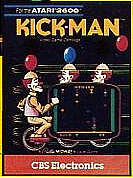



MADDEN FOOTBALL / MADDENESS
An early version was being done, using "X's" and "O's" for the players (much like Atari's Football coin-op) but was later scrapped in favor of a completely different version that saw very little progress before CBS shut down their games division. Although the only boxes shown in ads (bearing the name "Madden Football") indicated it was for the Colecovision version, a CBS Games order form offered a FREE copy of this game for the
VCS! Ok, it wasn't exactly free - you had to send them
proof-of-purchases from both Wizard of Wor and Gorf. Still, that was a great offer (especially since the ad states that was the only way you'd be able to get it), which would have been even better if the game was actually MADE. Catalog description: "The video football game for the coach in all of us! Developed by the man who wrote the book on offense and defense: John Madden. Realistic gridiron action with eleven players on a side and advanced play options!"





TARG
This actual screenshot (picture #1) appeared in some 1983 CBS literature. A prototype version was found by Scott Stilphen in 2004 that is very close to complete (picture #2). The game was eventually released by Telegames under the name Universal Chaos, with slightly altered graphics (picture #3).



TUNNEL RUNNER
A promo box with alternate artwork (picture #1) appeared in an interview with Robert Hunter of CBS in the July 1983 issue of Video Games (page 26). Picture #2 is of the released version.


WINGS
These screenshots (pictures #1 and #2) appeared in some 1983 CBS literature. 2 prototype versions were found (pictures #3 and #4) by Scott Stilphen in 2004, but neither are 100% complete. A box (picture #5) was shown in magazine advertisements, which differed from a promo box (picture #6) that appeared in an interview with Robert Hunter of CBS in the July 1983 issue of
Video Games (page 26).
The November 1983 issue of
The Video Game Update mentions the game was delayed until the 1st quarter
of 1984 because CBS wanted other versions (5200, Intellivision, Colecovision) to
be released at the same time. For more information, check out this article.






|
COLECO |
BC's QUEST FOR TIRES
Although never formally announced, a Canadian Colecovision cartridge was found with an Atari VCS/2600 label on it.

COLECOVISION EXPANSION MODULE #1
A photo shown in the January 1982 issue of Video Games (pg. 74) shows an early version of the module (photo #1); a similar photo appears on the Colecovision system (both prototype and release versions). A different photo (photo #2) appeared in the April 1983 issue of
Electronic Games (pg. 10), regarding Atari's lawsuit over it. Both are quite different from the version that was released (photo #3).

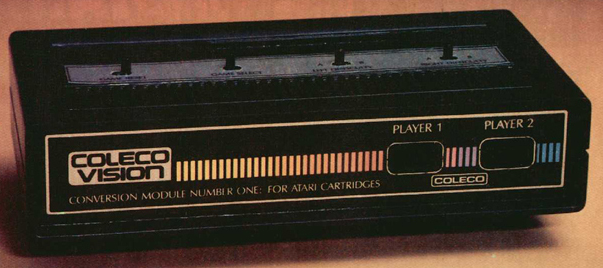

COSMIC AVENGER
Advertised in several VCS catalogs.


DONKEY KONG
This screenshot (picture #1) is from a flyer, which is slightly different from the release - especially Donkey Kong himself (picture #2). The style (as well as the same score) were also used in the manual (picture #3).



DONKEY KONG JR.
This screenshot (picture #1) is from a publicity slide, which is noticeably different from the release (picture #2).


FRENZY
This picture is from a flyer.
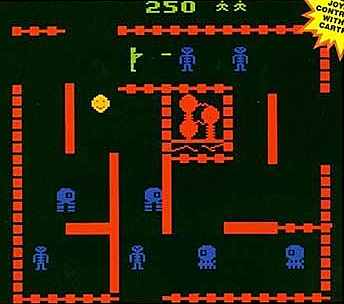
GEMINI SOUND I VOICE MODULE
This (picture #1) was an early version of the Kid Vid Module (picture #2) and was originally going to include Berenstain Bears, instead of Smurfs Save the Day.


GEMINI VIDEO GAME SYSTEM
A photo of the system from a press kit (picture #1) shows a minor difference in the casing, compared to the released version (picture #2).


LADY BUG
Advertised in several VCS catalogs. John Champeau (of Champ Games) did a spot-on
version of the arcade game in 2006 (picture #3).



MR. DO!
This screenshot (picture #1) is from a publicity slide (which was used as late as 1984 in Coleco's own literature!), and is drastically different from the release (picture #2). Programmer Ed English was given a prototype coin-op version of the game to use for programming the conversion, which depicts Mr. Do holding a rake (picture #3), as is depicted in the publicity slide!



MR DO!'s CASTLE
Advertised in a 1984 catalog. Somehow Parker Brothers (who ironically only advertised it in a 1984 catalog of theirs) ended up releasing it instead. We're guessing Coleco either worked out a deal with Parker Brothers, or they passed on it, and whoever the subcontractor was sold it to PB. Coleco catalog description: "Mr. DO! returns to do battle against meaner Badguys in an all-new adventure, inside his castle. You race him around the castle, climbing ladders, jumping through holes, and looking
for keys. If you're quick enough, you can use Mr. DO!'s hammer to knock out blocks onto unsuspecting Badguys below. Watch out, your enemy can multiply! But if you can get the keys, maybe you can win an extra Mr. DO!"

PEPPER II
The screenshot (picture #1) is from a flyer. Jerry Greiner found a labeled cart, sans board (pictures #2 and #3).



ROCKY BATTLES THE CHAMP
This picture is from a publicity slide. It also appears on a flyer.
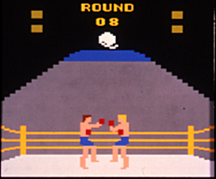
SMURF: RESCUE IN GARGAMEL'S CASTLE
This screenshot (picture #1) is from a flyer, which is drastically different from the release (pictures #2 and #3). It also appears on the Colecovision Module #1 box.
A slightly different box (picture #4) from the released version (picture #5) was shown on the same flyer. The Video Game Update's May 1983 review
mentions seeing an earlier version of the game that resembled this early
screenshot.





SMURFETTE’S BIRTHDAY
This picture is from a publicity slide. It also appears on a flyer.

TARZAN
Based on the ColecoVision game. According to the company that designed it, Wickstead Design, the game was completed but unreleased due to a chip shortage (to be more accurate, it was due to a manufacturing error with the custom "RAM/ROM" chips). From a February 1983 CES
press release and flyer (picture #1): "IT'S A JUNGLE OUT THERE! Practice up on your Tarzan yell, because it's your turn to help the famous Ape Man save his jungle friends from the Great Safari Hunters! Only you can guide him through the deep, dark, danger-ridden jungle,
swing him safely across lethal waters, and give him the right moves to fend off and eliminate the intruders. Watch out for the hunters' weapons, deadly jungle beasts and other obstacles, but remember - one false move and you'll perish in the jungle!". From a 1984 CES catalog: "Evil hunters have invaded the jungle to carry Tarzan's tribe of apes off to a zoo. You race through the jungle, leaping from vine to branch, running along the jungle floor... all the time looking out for the hunters'
traps. You reach a clearing and have to fight your way through the captors to liberate your ape friends. If they get away again, you'll have to catch up and free the apes before they leave the jungle forever." The same catalog also showed an actual screenshot (picture #2) and box art (picture #3).
The same screenshot but different artwork was also published (picture #4).
Video footage of the game was apparently shown at a CES show, which could be
where those screenshots came from. A
manual
was found in 2011 (picture #9). In February 2022 a Colecovision cartridge with an Atari VCS/2600
label (picture #5) was sold on Ebay. The same year, someone, Rob "AtariSpot",
purchased a prototype from a former Coleco employee; this copy was eventually
released June 3rd, 2024 (link). In February 2023, someone else found a
similar Colecovision cartridge. In January 2024, another cartridge was found,
this one having the typical white shell (picture #6). It sold on Ebay on
February 1st for between $4k and $10k. The owner opened the shell to take a
photo of the pcb and in the process ruined the label. The game was meant
to be a tie-in to the then-upcoming Greystoke: The Legend of Tarzan, Lord of the
Apes movie, which was released in 1984. Pictures #7 and #8 describe the
contract info between Edgar Rice Burroughs Inc. and Warner Bros. for the movie,
and with Coleco for the home games (console, computer, and electronic games);
how Atari missed out on getting the rights to do video games for a Warner Bros.
movie, we may never know. The games were meant to be on the market by June
1983, but the only version that was released was the Colecovision one, which
didn't reach the market until August 1983. The prototypes show a later
version (picture #10) of the screenshot shown in Coleco's press kits.










TURBO
The game was originally advertised in several VCS catalogs, along with a picture of a labeled cart (pictures #1 and #2), and even reviewed by Electronic Games! A flyer (picture #3) shows a screenshot and a box (picture #4), and had this to say: "GET READY FOR LIFE IN THE FAST LANE! This high-speed racing game is not for
the faint-hearted! You control a high-performance car, speeding down the open road. Accelerate - change lanes - but watch out! While controlling the car's speed and direction, you've got to pass other racing cars, avoid treacherous obstacles, and still make it in record time!" The same screenshot also appeared on a flyer. Picture #5 is from a demo by Thomas Jentzsch to show the picture was as least technically possible. Picture #6 is from the Colecovision Expansion Module #1 box, and is
noticeably different from the original. A prototype cartridge (picture #7) was discovered in 2006 by Anthony R. Henderson, who was one of 2 programmers who worked on it. Note the screenshot (picture #8) is drastically different from the earlier ones.
The April 1983 issue of The Video Game Update
describes seeing the game at the 1983 Winter CES: "When we saw Turbo by Coleco
for the Atari system in January at the CES, it had basically straight roads, but
a lot of design on the sides of the road." Leonard Herman claims this version is not the same version he saw at a CES show, which he describes as such: " The screenshot that I used in ABC To The VCS (picture #3) closely resembles what I remember from CES. I
also remember another city scene where there is water on the left and buildings on the right and the road is in the center. It gave the appearance of riding on a lake-view road."




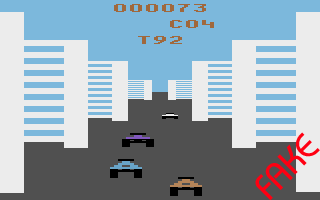
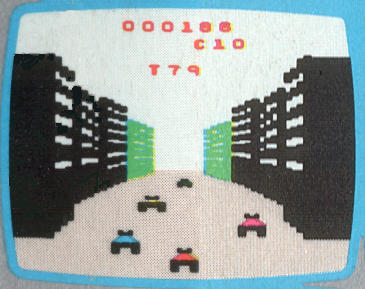


WILD WESTERN
Picture #1 is from a publicity slide. A flyer (picture #2) shows a screen shot, and had this to say: "SADDLE UP FOR AN OLD WEST SHOOTOUT! Help law and order prevail on the electronic frontier! Outlaws are out to ambush the train. You're the Sheriff who can stop them with your faithful horse, trusty six-shooter and your wits! You can't shoot over the train, but you can fall back and get the bandits from behind, or gallop on ahead of the train and shoot back over the shoulder at 'em! The
Sheriff may even go across the tracks or up on top of the train to fight the varmints face to face. Can you defeat those ornery sidewinders?"


ZAXXON
A slightly different box (picture #1) from the released version (picture #2) was shown on a flyer.


|
COMMAVID |
MISSION OMEGA
Artwork was shown in even the earliest of CommaVid advertisements (it was announced as one of CommaVid's 4 debut titles at the 1982
Summer CES). Description: "You are flying the last mission from Earth... Mission Omega, to an artificial world built to rescue the population and supplies of the planet. Somehow the power that propels the immense space world has been redirected by BlackHeart. You must pilot your ship through the support columns and evade the defensive fire from the interceptor
ships sent to blast you. If you manage to save your ship and pilot it accurately, you may be able to trigger the collapse that will cause BlackHeart to consume itself and make the world safe to live in once again."

RUSH HOUR
First announced at the 1982/83 Winter CES and later mentioned in the April 1983 issue of Creative Computing. A prototype was shown at the 1983
Summer CES. Artwork also appeared in a 1983 flyer (picture #1). The game was outsourced by CommaVid and designed by Ben Burch, who was actually a consultant hired by CommaVid. Ironically, Burch was in an automobile
accident during the development and it's believed the project was eventually scrapped before completion. 2 different descriptions exist: (from
winter 1982/83 press release) "You're in a hurry and you can't afford to be one minute late. You are driving along smoothly and then you're caught in a drivers nightmare - a traffic jam during rush hour. But you just won't creep along - you must blast, dodge, and weave your way through the traffic until you reach your destination."; (from
summer 1983
press release) "Caught in a drivers nightmare, a traffic jam during rush hour, you must blast, dodge, and weave your way through high speed traffic. Your super auto is equipped with lazer-blasting headlights; but you must avoid the debris cluttering the autobahn to reach your destination. This new concept in driving/racing video game will challenge the most sophisticated driver." A finished box (picture #2) and several unfinished prototype versions of this game were archived from Dr. John
Bronstein in September 2002. A reproduction of the most complete and stable prototype version (picture #3), with help from Mike Mika, was released by CGE Services (who at that time acquired the rights to all of CommaVid's properties) at CGE2K3 - 250 boxed copies were made.



|
DATA AGE |
MR. BILL'S NEIGHBORHOOD
According to announcements by Data Age in the 1983 Winter CES, the object of the game was to help Mr. Bill lead his family away from the neighborhood before he's caught by the menacing Sluggo. As Mr. Bill meets up with each character, he moves slower and slower making his escape from the pursuing Sluggo and Mr. Hands more difficult. His travels are hampered by street obstacles such as alley barricades and speeding traffic. An article in the April 1983 issue of
Videogaming Illustrated (pg. 77) had this quote from Data Age's Product Development Manager J. Ray Dettling: "For seven years Mr. Bill's audience watched him get stepped on, sat upon, pulled apart, and crushed in every way possible. Now, Mr. Bill's fans can look after him and keep him away from Sluggo." The player helps Mr. Bill gather his mother, his dog Spot, and his girlfriend Sally and flee
his neighborhood, with its dead-end alleys and speeding traffic, before Mr. Hands or Sluggo can make a clay pigeon out of him. A "Save Mr. Bill" media campaign was planned to coincide with the release of the game in April 1983.
A news article in the June 1983 issue of Video
(pg. 18) states the game will be voice-synthesized to say Mr. Bill's catchphrase
"Oh Nooo!". The July 1983 issue of Electronic Fun with Computers & Games (pg. 83) features an interview with J. Ray Dettling and includes some rough drawings for
the game (picture #2). The game was mentioned in the Aug./Sep. 1983 issue of Video Games Player. According to an article in the October 1983 issue of Video Games (page 32), when Data Age folded, the license for the game came back to Mr. Bill creator Walter Williams. He spent a day
at the 1983 Summer CES show looking for other software prospects, and stated Universal was working on an arcade game version, which was to be out before Christmas. Description from flyer: "Yes, DATA AGE brings you MR. BILL's first video game, "MR. BILL'S NEIGHBORHOOD." Now instead of having to watch MR. BILL being smashed on "Saturday Night Live," Bob Hope specials, "David Letterman" and other TV shows, you can try to save him and his friends from their arch rival Sluggo. But watch out! In MR.
BILL'S NEIGHBORHOOD there's speeding traffic, streets with dead end alleys and the ever-present Mr. Hands who will grab you and push you toward the worst fate of all, Sluggo. MR. BILL became an American hero as a regular feature on the original "Saturday Night Live." He has gone on to appear in numerous television shows and in many magazines and newspapers. MR. BILL's first book, THE MR. BILL SHOW sold a million copies and was a Publisher's Weekly and New York Times #1 Bestseller. He also has
his own calendar, greeting cards and a new book, MR. BILL IN SPACE. MR. BILL'S NEIGHBORHOOD was conceived and designed by the creator and producer of MR. BILL, Walter Williams. We swear the game offers all the spontaneous thrills and laughs of a MR. BILL movie. To save MR. BILL, see your DATA AGE distributor. MR. BILL'S NEIGHBORHOOD will be available April 1983."


SURVIVAL RUN
1982 CES literature description: "No one has ever returned from the deadly cosmic portal, yet driven by intense curiosity you enter. Suddenly you plunge into a negative universe and find yourself on a labyrinth of narrow walkways spanning a sea of deadly liquid nitrogen. You let out a sign of relief a moment too soon as the sharp pain in your
F tells you that the air is as deadly as the sea. Your only hope for survival is the Korbinian cubes -- an energy rich diet that will also neutralize
the poisonous air. In sheer desperation you run for your life to the nearest cube.
Just then you confront the diabolical Dylak, an ammonia breathing monster lurking in the dark corners. His purpose: guard the Korbinian cubes and destroy the intruder. With only seconds of life remaining, you must avoid Dylak and retrieve the cube. You make it just in time. As you absorb its energy, you achieve super strength, possibly enough to push Dylak into the deadly sea. But beware! Your strength is short lived. Soon you will need another cube."
A prototype was found in early 2003 (picture #2).


|
ENTEX |
ENTEX 2000 PIGGYBACK COLOR COMPUTER
Yet another in a long line of announced keyboard add-ons that were announced for the
VCS but never released. The Piggyback was to feature a 70-key full-stroke keyboard including 4 cursor movement keys and 9 function keys. It was Z80-based, had 8K of built-in BASIC,and 3K of memory (2K of user-accessible RAM and 1K of video RAM), which was expandable to 16K via a Memory Expansion Cartridge (which included a cassette interface). The display offered 128 characters and a 32x16 character display. At
least 4 cartridges (priced at $35 each) were to be ready at launch, with 6 more to follow by June. Planned titles were Basic Programming, Beginning Algebra, Beginning Math, Computer Typing, Home Finance, Number Games, Speed Reading, Spelling I, Sports Statistics, and Word Games. According to a company letter, it was compatible with the
VCS/2600 and 2600A models, as well as the Coleco Gemini, Colecovision Expansion Module #1, Columbia Home Arcade, and the Intellivision Expansion System Changer. And
with 1 of 3 $7 Converters, it was compatible with the Atari 5200, Colecovision, Intellivision I and II, Sears Super Video Arcade, and Radio Shack Tandyvision. A separate Peripheral Expansion Module I (with RS-232, Parallel I/O, and 2 cartridge ports) was to follow shortly after the computer's release, which enabled the Piggyback to interface with a use of a printer and modem, and offered an additional 16K, for a total of 34K RAM. A disk drive controller was also planned. Literature showed 2
different name plates on the unit - one said "PIGGY BACK" and the other said "ENTEX 2000 PIGGY BACK". The Piggyback was slated to launch in May and sell for $125.





|
EXUS |
ELECTRONIC HEALTH BIKE, THE
An integrated exercise bike system very similar to Atari's unreleased Puffer.
1984 flyer description: "The ELECTRONIC HEALTH BIKE created by EXUS Corporation,
the leader in innovative fitness and health products for home and gym,
represents a breakthrough in stationary/exercise bicycle technology. Now, for
the first time, it is possible to carefully monitor the physical performance of
the rider, including heart rate and average, approximate calorie burn while
watching a graphic presentation of these and other pre-determined fitness goals
on your television set. As you pedal your way to improved health, you may
carefully measure your progress against goals that you have pre-selected and
introduced into your own personal health program through the EXUS Computer
System which is integrated into the Electronic Health Bike. The exclusive Cardio
Tach with other EXUS health and fitness software programs are supplemented by
EXUS Health Cycle Program, a video program that provides diversion and
entertainment in the form of a highly colorful obstacle course the rider
"steers" through by operating the digital controls that are part of the hand
grips on the Electronic Health Bike by EXUS. For younger family members, video
games that might normally be played on an Atari 2600/VCS may also be played
through the EXUS Computer on the ELECTRONIC HEALTH BIKE."
ELECTRONIC HEALTH BIKE KIT
In addition to the ELECTRONIC HEALTH BIKE, EXUS Corporation is pleased to introduce the ELECTRONIC HEALTH BIKE KIT.
The ELECTRONIC HEALTH BIKE KIT consists of the EXUS Computer, molded ABS plastic digital control hand grip panels (2) each having three buttons that control all program functions and an electronic sensor that interacts with the host bike's speedometer. The Kit also includes all EXUS health programs as well as the Health Cycle with program. The ELECTRONIC HEALTH BIKE will adapt to virtually all standard stationary exercise bicycles and is packaged in an attractive self-selling display carton. An
illustrated folder provides complete hook-up instructions."
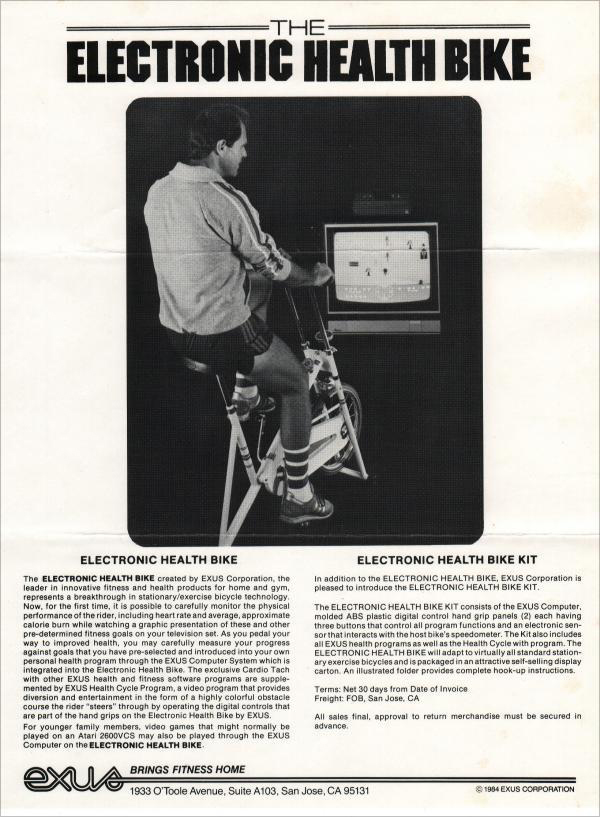
HEALTH CYCLE PROGRAM
Was to be included with the Electronic Health Bike.

|
FOX VIDEO GAMES (20th CENTURY FOX) |
9 TO 5
Listed on a flyer as one of 6 upcoming games. Catalog description: “A secretary's work is never done: dictation, typing letters, filing, and it all has to be done on time. Now, the boss wants coffee, and time is running short. Can she keep up with the pace?"

THE ENTITY
Listed on a flyer as one of 6 upcoming games. Programmer Mark Klein allowed a copy of the game to be released at CGE in 2003.

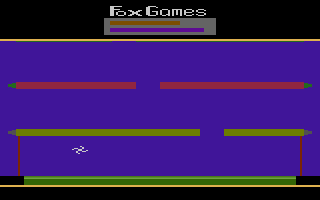
THE FALL GUY
Sirius planned to release this themselves, under the original name, Squish 'Em (Atari 400/800 flyer, picture #2), until they struck a deal with 20th Century Fox to release it (and several others) - most of which ended up getting tied into various TV movie properties of theirs.
Originally slated for May 1983 release, it was shown at the January 1983 CES. Pictures #3 and #4 are from a flyer. A near-perfect version was done by Bob Montgomery in 2007 (picture #5).
A prototype (picture #6) was found in early 2024. There was a prototype version for the Colecovision (pictures #7-#9) and a
released version for the C-64 (pictures #10-#12), but both were completely different. Catalog description: “Let me tell ya, being a stunt man is no easy job – car wrecks, falls, fights. I thought I’d done it all. Wrong! This new one is really something else. See, I’ve gotta climb up the side of a 48 story building and grab a suitcase on the top floor. But that’s not all! This is a monster movie and this place is crawling with creepy creatures actually trying to knock me off!
And I didn’t even tell you about the bricks they throw at me from the roof. I’m tellin’ ya, this is really a tough one! Well, gotta go now, time for another ‘take’. I hope they remembered to put film in the camera this time.”


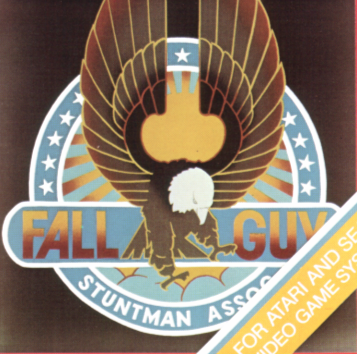






MELTDOWN
Shown at the 1983 Winter CES, and listed for release in April 1983 under what was then a working title. Also mentioned in the April 1983 issue of Creative Computing. Howard Delman brought this prototype to CGE2K4 to be archived. The game was completed under the name Atom Smasher, but when it was first offered to 20th Century Fox, they renamed it Meltdown. According to fellow Videa designer
Howard Delman, "The history of Videa's two VCS games is murky, because it only began to be written years after the fact. I would take everyone's recollections and average them all together. I doubt any of us really remember the exact details. Having said all of that, here is my recollection... the games were not actually "sold", but were licensed. I believe 20th Century Fox paid us $50,000 as an advance on royalties for the license to manufacture and sell the two games. In accordance with the
license agreement, when they went out of business, the license was terminated. Parker stepped up, and signed the same deal with us, but they went out of business right after signing and paying, so again, the games were available. I believe our agreement with Atari was different. They were only interested in one of the games (according to Lee Actor, it was Lasercade), and wanted to test it before committing, so they paid us an "option" fee, which was much less than we had gotten from Fox and Parker.
I don't recall if they actually did any testing, but they informed us that they were not going to exercise their option. The games went back into my desk drawer at Videa, moved to my desk drawer at Sente, and finally ended up in the desk drawer of my home office. We made a lot of money off of two games
thta didn't see the light of day for another 25 years! The two games we developed, Lasercade and Meltdown, are finally available. We agreed to put Meltdown into the public domain, after we learned that
the ROM code had been leaked anyway. Lasercade was licensed to CGE Services." Cumma Technology used Meltdown (under the name Atom Smasher) with their MetaWriter display at the 1984 Winter CES, under the original Atom Smasher name. The description of the game
from 20th Century Fox's CES flyer reads: "Watching the screen that monitors the reactor's core, you notice something odd; an atom is beginning to
throb. Uh-oh, this means trouble! Closer inspection reveals a
deadly Quark racing through the core, agitating the atoms. It has to be stopped before it causes a chain reaction of exploding energy!
You must line up the Stabilizing Emitter and fire cadmium rods at the hot spots.
Hurry, the action is really heating up in there. The Geiger Counter is clicking
at a frantic pace. Already the monitor is lit up with furious pulsing action.
This is your challenge - you must meet it or MELTDOWN!" The game was given to CGE Services, who later leaked it to the
community (via Joe Santulli on Digital Press). A limited run of 50 carts were produced with permission from CGE Services by Scott Stilphen in 2007 for $15 each. As a result of the ROM being available, carts made by various people have been sold on Ebay since. Price and scarcity reflect the original prototype, not the original, authorized reproductions. Price and scarcity reflect the original prototype, not the reproduction.



REVENGE OF THE CHERRY TOMATOES

ROARING 20s
This was one of the early names for Bank Heist.

VOYAGE TO THE BOTTOM OF THE SEA
According to programmer Bill Aspromonte, it was based on the popular 60s movie and TV series, "Voyage to the Bottom of the Sea" and slated for June 1983 release, but it was eventually released under the bland name "Crash Dive" (picture #2) when they failed to obtain the rights to use the name... even though it was a 20th Century Fox property! The description for it, from a 1983 CES Press Kit catalog, shows a rendered screenshot (picture #1), which confirms they are one and the same.


|
GAKKEN |
JUNGLER
Based on the Konami arcade game, which was licensed to Stern Electronics. The player controls a snake-like ship moving around a number of mazes chasing three similar computer controlled ships. Being hit by bullets reduces the length of the ships. Ships are destroyed either when their length is reduced to zero or when they collide with a longer ship. Jungler was actually shown at the 1983 Winter CES by Gakken, but it was the only one of its planned titles which never saw
the light of day.

POOYAN
Before Konami decided to produce games by itself for the VCS, Gakken had acquired the worldwide home rights to Jungler, Pooyan, and Strategy X. Curiously, Gakken decided against releasing its games in the U.S. market, opting instead to provide games for PAL countries. This opened the door for Konami to publish its games in North America under it's own name, but they used the same label design and font Gakken used for their fliers.

STRATEGY X
Before Konami decided to produce games by itself for the VCS, Gakken had acquired the worldwide home rights to Jungler, Pooyan, and Strategy X. Curiously, Gakken decided against releasing its games in the U.S. market, opting instead to provide games for PAL countries. This opened the door for Konami to publish its games in North America under it's own name, but they used the same label design and font Gakken used for their fliers.

|
GAMES PEOPLE PLAY |
DEEP THROAT
An X-rated game that never saw the light of day. This title was mentioned in the Aug./Sep. 1983 issue of Video Games Player. Box art appeared on a French flyer.

|
GREAT GAMES COMPANY (IJE) |
$20,000 Pyramid
Family Feud
Jeopardy!
Joker's Wild, The
Password Plus
Price Is Right, The
Tic-Tac-Dough
Wheel of Fortune
All were to be based on their respective TV game shows, and were announced at the 1983 Toy Fair show. Jeopardy! was later released for the Genesis. A pamplet refers to it as Password but a flyer refers to it as Password Plus (there were 2 different versions of the TV show - the original Password ran from 1961-67; Password Plus ran from 1979-82). A news blurb in the February 1983 issue of Videogaming Illustrated (pg. 8) also refers to it as simply Password. Pamphlet description: "It takes more than clever clues to win!". Wheel of Fortune pamphlet description: "There's more than luck involved!" It was later released for the Genesis, NES, and SNES.
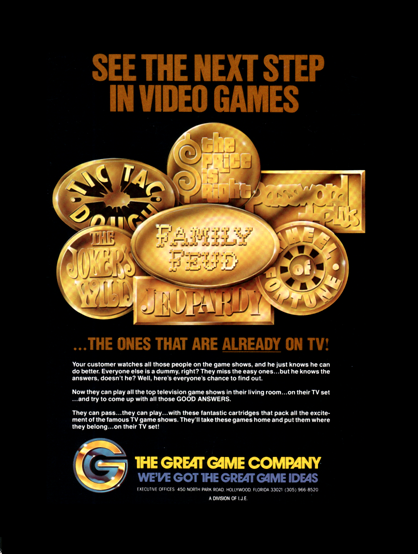
|
IMAGIC |
NO ESCAPE
Different artwork was made for it (picture #1), when it was known by its original title – Escape From Argos. It was eventually released with a different name and artwork (picture #2).


SHOOTIN’ GALLERY
The original artwork shown (picture #1) is much different from that shown on the actual release (picture #2).


SKY PATROL
Originally shown at a CES show (possibly January 1983. The game was never released because of lack of interest during Imagic's testing phase. Fellow Imagic alumni Bob Smith brought this title, along with a prototype box for it, at CGE99. After the show, programmer Brad Stewart gave permission for the ROM image to be shared with the classic community. Included on the 2003 Activision Anthology and Remix packages. At least 2 of Rob Fulop's
Cubicolor carts (#12 of 50, and #48) were originally labeled "Balloon Race". A news blurb in the April 1983 issue of Videogaming Illustrated (pg. 77) states, "The player is a World War I flying ace in an observation balloon crossing enemy lines. Firepower from below and whimsical winds from above are but a few of
the challenges the ace must face."
The mock-up photo (picture #1) shows a multitude of objects (including a biplane, which is depicted in the artwork). Most of these actually appear in the game - see this article for more info. Although the game was planned to be a race between 2 hot air balloons, the name and artwork seem to suggest something more war-themed. Picture #2 is an actual screenshot from the prototype. Picture #3 is the prototype cart.



|
KONAMI |
SUPER SCRAMBLE
Catalog description: “This exciting game is the 3-D version of the popular amusement game “SCRAMBLE” and the player can enjoy a feeling as if he were in the cockpit of the fighter plane. Take off from the aircraft carrier. Control your fighter plane and attack enemy’s territory to destroy their headquarters!! Get ready for enemy missile, antiaircraft guns and enemy formation flights. Breakthrough all the enemy’s attack using powerful missiles and machine guns. And
then, come back safe to the aircraft carrier.”
The same style of logo (pictures #1 and #2) was used for the original coin-op Konami releases (pictures #3 and #4).




|
M NETWORK (MATTEL ELECTRONICS) |
(More information on unreleased/unfinished M-Network games can be found HERE)
ADVANCED DUNGEON & DRAGONS: TOWER OF MYSTERY
Unfinished prototype. Picture #1 is from a 1983 Mattel catalog. Pictures
#3 - #5 are actual screenshots from the prototype. Originally announced at the 1983 Winter CES show and listed as "Advanced Dungeons & Dragons" (no sub-title) in the April 1983 issue of Creative Computing (pg. 24). Intellivision Productions owns a prototype of this game.
1983 Mattel catalog description: "The wretched dragon guards the treasure buried
deep within a towering mountain. You must journey through dense forests,
forbidden gates and a raging river to reach it. But, first, you must find the
proper tools and weapons hidden in mountain labyrinths along the way. Be
careful, each uncharted maze is revealed to you only a few steps at a time!" 1983 CES press release
description: "Stuck on top of the Tower
of Mystery, you must preserve your strength and protect the treasure as you attempt to escape." An early working title was "Dungeons and Dragons III". This was to be one of the 16K Super Cartridges with 2K of onboard RAM, and having 8 different types of screens. A 1984 press release catalog stated this was under development for release in 1984; unfortunately, Mattel Electronics closed in January 1984 - one month before the scheduled completion of the game. The game was 1 of only 6 Atari titles
officially still in development at the time of the closing. All that survives is the demo shown at the January 1984 CES
in Las Vegas. A prototype of this game is owned by Intellivision
Productions and was shown at CGE99. A few copies have been circulated amongst a
select few individuals (Sean Kelly and Matt Reichert, to name a few); hopefully
one day they'll share it with the rest of us.





ADVANCED DUNGEON & DRAGONS: TREASURE OF TARMIN
Completed prototype. Picture #1 is from a 1983 Mattel catalog.
Pictures #3 and #4 are actual screenshots from the prototype. Based on the Intellivision game designed by Tom Loughry and programmed by Synth Corporation. Originally announced at the 1983 Winter CES show and listed as "Advanced Dungeons & Dragons" (no sub-title) in the April 1983 issue of Creative Computing (pg. 24) and planned for a 1983 release, according to Mattel's
1983 press kit. A 1984 press release catalog stated this was under development for release in 1984 and it was shown at the January 1984 CES in Las Vegas; unfortunately, Mattel Electronics closed in January 1984. A box was even shown for it in a Mattel flyer, much like those for the later releases (such as Bump 'n' Jump). Catalog description: "You've found the secret map to the underground lair of the dreaded Minotaur. You can go in, but you'll never come out unless you slay the Minotaur and
claim the Tarmin treasure. As you make your way through the hallways and chambers, monsters wield their conventional or spiritual weapons. You must gather the proper defenses along the way. But use them sparingly, the Minotaur looms closer!"
A prototype of this game is owned by Intellivision Productions and was shown at
CGE99.
A few copies have been circulated amongst a select few individuals (Sean Kelly,
Kevin Horton, and Matt Reichert, to name a few); hopefully one day they'll share
it with the rest of us.




COMPUTER CORRIDOR
Never completed. Combination of two other games that were in development – Computer Revenge and Moon Corridors (which was similar to Battlezone). Marketing description: “You are captain of a star ship entering unknown planets filled with hostile computer units. Score points by attacking the computer force and hitting the computer units. Your mission is complete when the full quadrant of planets is free of the computer force. Monitor your fuel supply, shield
strength, and phaser power. Use radar to locate units. Add fuel by finding the computer friendlies. 3-dimensional graphics. Scrolling grid. 1 player game.”

COMPUTER REVENGE
Originally planned for a 1983 release, according to 1983 press kit catalog. The game was shown at the 1983 Winter CES. Mentioned in the April 1983 issue of Creative Computing (pg. 24) and described as, "You must defend the human race against hostile computers."
Picture is from a 1983 Mattel catalog. 1983 Mattel catalog description:
"It's up to you to defend the entire human race against an interplanetary
missile barrage. It's controlled by hostile computers located throughout the
galaxy. And computers almost never make a mistake! A game of quick wits and
lightning reflexes. (One player)"

CUMULUS DARK CAVERN FLAPPER IN SEARCH OF THE GOLDEN SKULL
INTERNATIONAL SOCCER LOCO-MOTION MISSION X
MONKEY BUSINESS ROCKY AND BULLWINKLE
SEA BATTLE
Never completed. An original game by Jeff Ratcliff. He was later pulled off the
game to work on Masters of the Universe II. Game description: “You must protect
the cloud city of Cumulus from descending enemy ships. Your first line of
defense are battle pods that float above the city. If the ships manage to
destroy your pods, you must fight the enemy on the planet surface where they
will attack the generators that project a protective energy shield around the
city. Should the generators be destroyed, the city is doomed!”
Although all the screenshots used in their catalogs are artist renderings, the "available soon" one shown for this game (picture #1) didn't even have the correct colors (picture #2). Even when the game became available, the screenshot was never corrected in later catalogs. 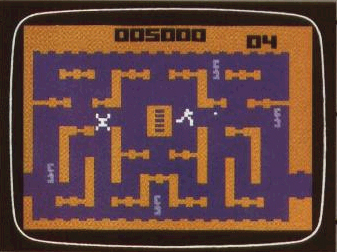

Unfinished game by Stephen Tatsumi. The drawing is from Tatsumi’s original written proposal for the game. Game description: “You control the Flapper to rescue baby Flappers from an underground maze. The maze is filled with snakes, bats, and ghosts. Cave-ins and landslides keep opening and closing the tunnels. Luckily, the Flapper is a unique fellow: he has three types of beanies – chopper for flying, gun for shooting, umbrella for protection – and four
interchangeable types of legs: flying, jumping, running, and walking. You have to find and change the appropriate beanie and legs for him to overcome the obstacles and rescue the babies!”
Picture #1 is from a 1983 Mattel catalog. Pictures #2 and #3 are actual
screenshot from the prototype. Programmed by VideoSoft for Mattel. It’s a 16K game, which also required 2K of onboard RAM
(same as BurgerTime). 1983 Mattel catalog description: “Your engaged in a worldwide search for a priceless artifact – a solid gold, prehistoric human skull. Use the treasure map to determine the Golden Skull’s location, then begin your perilous search. Along the way you’ll encounter air battles, steaming swamps, and
the pyramid maze. How far will your obsession take you! (One player).”
A prototype of this game is owned by Intellivision Productions and was shown at
CGE99 and CGE2K. A few copies have been circulated amongst a select few individuals
- Sean Kelly and Kevin Horton (who posted
an actual screenshot of it in 2013), to name
a few; hopefully one day they'll share it with the rest of us.
Reichert even reviewed it for his website,
but claims it was "only based on screenshots and what people told me" (LINK), even though he
claimed years earlier he could only review games that were given to him (LINK).
Sounds like someone can't keep their stories straight.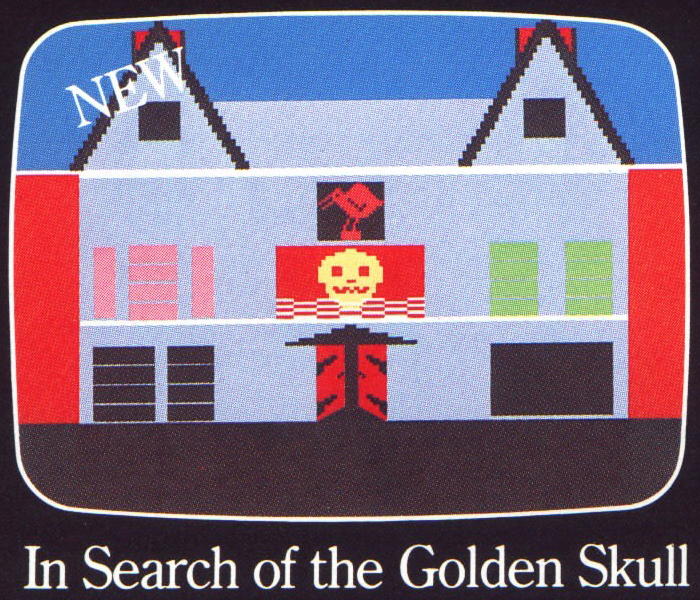


The catalog entry (picture #1) shows a horizontally-scrolling game similar to the Intellivision version, whereas the released version is a vertical affair (picture #2). Mock-up, or accurate representation of an earlier version? The screenshot was corrected in revision 3 of their catalog.

A game where players control a train on railroad tracks. Picture #1 is
from a 1983 Mattel catalog. Picture #2 is an actual screenshot from the
prototype. Originally planned for a 1983 release, according to 1983 press kit catalog (picture #1). The game was shown at the 1983 Winter CES. Mentioned in the April 1983 issue of Creative Computing (pg. 23) and May 1983 (pg. 24)
and October 1983 (pg. 30) issues of Electronic Games (pg. 24).
A prototype of this game is owned by Intellivision Productions and was shown at
CGE99. A few copies have been circulated amongst a select few individuals (Sean Kelly,
Roman Scharnberg, and Matt Reichert, to name a few); hopefully one day they'll
share it with the rest of us.

Version of the Data East arcade game. The artwork is from a 1983 full-size press catalog. A picture of a cart (pictures #2
and #3) appeared online, but it’s unknown whether or not this is a mock-up (used for advertising) or a fake. According to the Keith Robinson (of the Blue Sky Rangers), programming
for the VCS version never started.


Unfinished original game by Eric Del Sesto, which began as his training project in mid-1983. The game featured a seven-page scrolling map of the zoo with a new graphics technique called “hidden V-clocks”, which produced wider, cleaner displays (it was a programming technique that eliminated altogether the horizontal lines that appeared on the left side of the screen). The drawing is from Eric’s original written proposal for the game. Game description: “In the zoo, things have gone
awry. Billy the Chimp has escaped and is up to no good. As any curious monkey would, he has managed to free the elephants! It’s up to you, as Mike the Zookeeper, to return the elephants to their cages. Once you have restored order in the elephant section, you must quickly run to the next section of cages. Perhaps you’ll have to capture the loose Koalas. Maybe you’ll have to avoid soaring hawks, battle fierce tigers, or try to grab the slippery penguins.
Along the way, you’ll find items which will be of help to you, such as a bag of peanuts or a net. So grab your hat and stop this monkey business!”
Announced at the Winter 1982/83 CES and originally planned for a 1983 release,
according to 1983 press kit; a description of the game from it reads: "Rocky and
Bullwinkle must stop the evil Boris and Natasha from robbing a train full of
priceless valuables. While Boris uses 'Upsidasium' to float the valuables up to
Natasha's waiting helicopter, Rocky must fly around and intercept them. When
Rocky catches the valuables, he gives them to Bullwinkle for safe keeping." A
prototype of this game is owned by Intellivision Productions and was displayed
at CGE99 and CGE2K. Picture #1 is from a 1983 Mattel catalog. Picture #2
is an actual screenshot from the prototype. A modified ROM was released on the latest Worship the
Woodgrain CD set (#3).
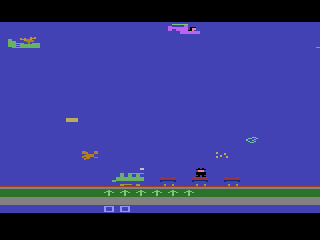
A 2-player-only game. Version of the Intellivision version. Battle it
out on the high seas, trying to sink each other's fleet and secure their port.
Originally called "High Seas", this previously unreleased title was first shown
at CGE99. Cartridges were made by Sean Kelly and first sold on
Intellivision Productions' website in late 2000.
The catalog screenshot (picture #1) is noticeably different from the actual game (picture #2), as it shows the bases on the sides of the screen, as opposed to the top and bottom.


TRON DEADLY DISCS
The catalog screenshot (picture #2) is noticeably different from the actual game (picture #2), as it shows a grid in the playing area.


WINTER OLYMPICS XIV
Planned for both the
VCS and the
Intellivision, the game allows arcaders a crack at the "ski jump" and/or "bobsled" events in this one, only this time on electronic versions of the actual Winter Olympics courses."
Picture is from a 1983 Mattel catalog. 1983 Mattel catalog description:
"All the excitement of a classic Winter Olympics competition. You must score the
most points, or post the fastest time to bring home the gold. You can compete
against the computer or against another player. Either way you'll experience the
thrill of victory and the agony of defeat."
From a news blurb in the August 1983 (pg. 14) issue of Electronic Games: "Mattel has revealed plans to produce a Winter Olympics cartridge. The XIV Winter Olympics title has been designated as the official videogame of the 1984 Olympics, to be held in Sarajevo, Yugoslavia."

|
MILTON BRADLEY |
ARMORED COMMANDER + TANK BLITZ
Shown in a 1984 catalog. Was to be the 3rd specialized “Commander” controller in the Power Arcade series, along with Flight Commander and Cosmic Commander. Catalog description: “Now video game fans can use a hand controller with some of the trappings you might expect in a real battle tank! Players push both handles forward or back to move tank on TV screen. Tank on screen comes to a stop when one handle is pulled forward and the other pushed back. Picture
in gun sight lights up, controller vibrates when ‘Fire’ buttons are pushed. Comes with ‘Tank Blitz’ game cartridge.”
An unlabeled prototype was first shown at CGE2K1 and later shown again online in
2013 that might possibly be this game (picture #3).

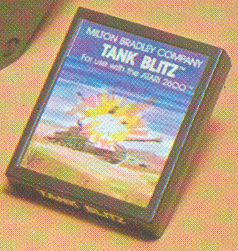
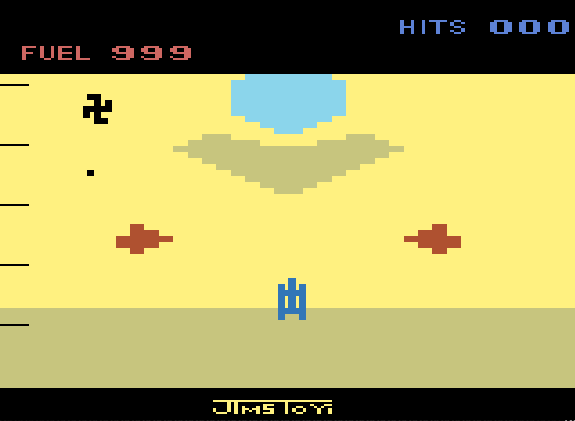
HD2000 controller
This was a cheaper variant of the TI-99/4a MBX Expander controller, but without the 3 auxiliary buttons and the rotating top. Although never released, a few prototypes are known to exist. Somehow Atari ended up releasing it as the Space Age joystick.


SCRAMBLE
Version of the arcade game by Konami.

SPITFIRE ATTACK
Alternate artwork was shown in company literature.

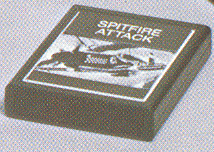
STAR TREK
This was one of the 3 games that Western Tech was originally developing for Kenner, back in 1981; when they backed out, Milton Bradley picked up the rights to it. We're guessing this was going to be similar to the Vectrex version. Milton-Bradley planned to create games for the VCS to be distributed under the GCE name. A sell sheet from their 1983 CES Press Kit had this to say: "Congratulations on your Starship command! Your mission: Seek out and destroy the enemy Klingon Mother ship. Chart your
way through unexplored sectors of the galaxy, wary of hostile spacecraft and their deadly torpedoes. Transport yourself through mysterious Black Holes to face unknown new dangers. Let lasers and protective shields help you survive, but careful not to drain your fuel supply!".

SURVIVAL RUN
Alternate artwork was shown in company literature.


|
MULTIVISION |
BATTLE OF THE SEXES
According to the programmer
Michael Case, the game was finished but the only known copy was left with the designer: "It involved male and female figures coming together from the top and bottom of the screen, to either shoot each other or screw each other. It wasn't as good (as Harem). It was basically like Pong. I knocked it out in a few weeks so we could say we had two games when we approached distributors." The October 1983 issue of
Videogaming Illustrated featured a quote from Eugene Finkei
about the game:
"Battle of the Sexes is played simultaneously by two players. It's very innocent. Each player has surrogate partners scrolling across the screen. Each player must score with as many surrogates as possible while trying to knock out the surrogates of the other partner. There are different skill levels and variations. It can be played by two guys with girls scrolling across the screen. To score, the player directs the figure to bounce together with the surrogate for a fraction of a second. No genitalia. And you don't shoot the other surrogates, you merely get them out of the way."
Below is a flyer for the game.

HAREM
The October 1983 issue of Videogaming Illustrated featured an article on adult-themed video games, which included these actual screenshots (picture #1) of Multivision's unreleased game, Harem. Picture #2 is a flyer for the game. Scott Stilphen tracked down the game's programmer, Michael Case,
in 2007 and released the ROM with his permission. Pictures #3 and #4 are of the actual game.




|
PARKER BROTHERS |
AMIDAR
An early catalog entry shows different box art (picture #1) from the released version (picture #2).


ASTRO CHASE
Licensed from First Star Software, this was a version of Fernando Herrera's Atari
400/800 game that was programmed by Alex Leavens. First mentioned in the June
1983 issue of The Video Game Update
(picture #1) The October 1983 issue of
Electronic Games notes First Star
Software sold the rights to the game to Parker Brothers (picture #2), and again
in the November 1983 issue (picture #3). The April 1984 issue of Video Games
(pg. 37)
shows a photo of Parker Brother's CES booth with a prominent Astro Chase sign
(picture #4). The April 1984 issue of Video
Games Player (pg. 9) mentioned Parker Brothers shelved the game,
even though it was completed. 2 prototypes were found in 2022. The first
was labeled "Rev 1.5 25-Oct-83". Jose "wonder007" Artiles currently owns that
one. The other was labeled 10-20-83 and was sold on Ebay in November 2022.

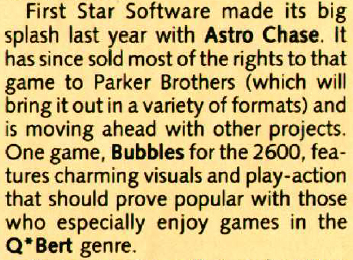

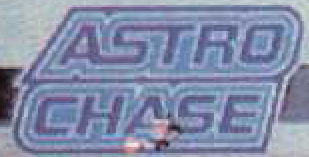

CIRCUS CHARLIE
Boxes were shown in photos at the 1983 CES for the
VCS, Colecovision, and Commodore 64 (picture #1). A press-release description mentions the
VCS
version having 4 screens, and the Colecovision and C-64 versions having 5 (the arcade had 6). Philip Orbanes, who was the Senior VP for Research & Development at Parker Brothers at the time, had this to say about it: "I saw the first work on Circus Charlie for the Atari 2600. 1984 was a year of turmoil inside Parker, esp. in regards video games
due to the rapid downturn in the retail market. Heartbreakingly, we laid off 95% of our formerly booming electronics R&D staff. During this process, Circus Charlie was canceled and no one had the prescience, or will, to archive unfinished work."
Someone posted a screenshot in August 2025 from a prototype they bought (picture
#2)


THE INCREDIBLE HULK
"Because trade input contributed strongly to going forward with a video game and how much to order, the programmers usually put together a demo that played on a TV, resembling the final games graphics. Sometimes, we used VCR's, out of sight."
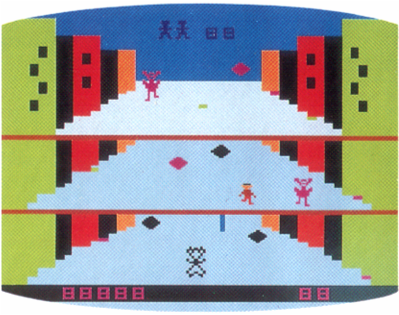




G.I. JOE: COBRA STRIKE
A prototype box (pictures #1 and #2) exists that was shown in some ads and in Parker Brothers' 1983 100th Anniversary catalog (picture #3). It features the same cover artwork as a comic (picture #4) that was likely out in mid to late 1981. The released version (picture #5) has different artwork.
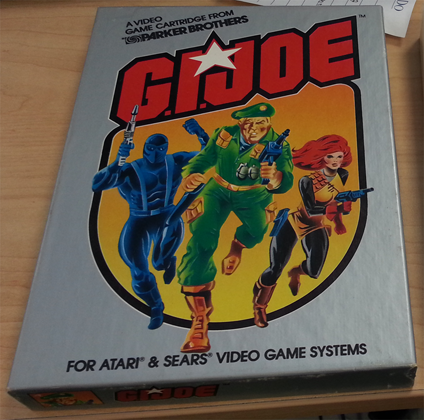
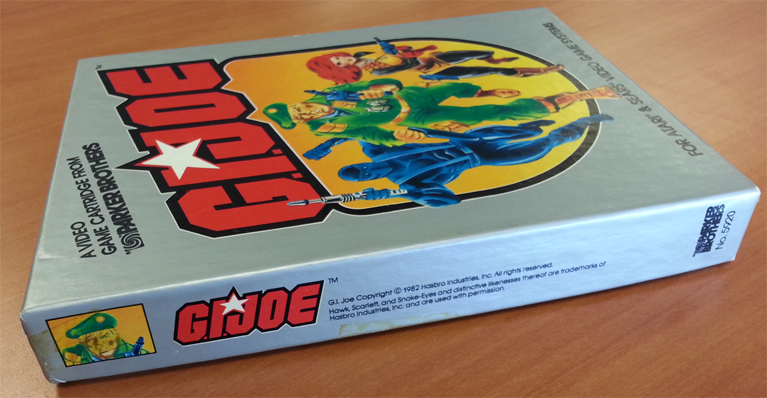


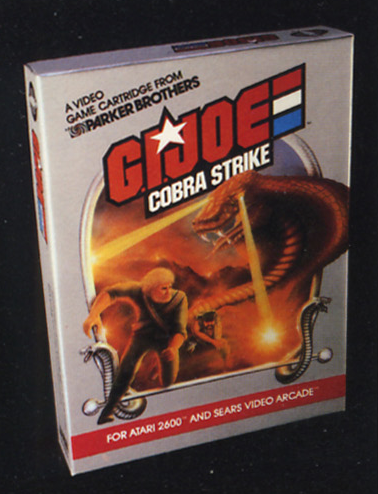
JAMES BOND 007
The mystery surrounding this game is worthy of a secret agent. Charlie Heath worked on a demo version
- a 1st-person, single-screen shooter - based on the final scene in Moonraker, before leaving Parker Bros in late
1982, but no copies of the game exist.
The first artwork/promotional material that appeared listed the title as JAMES BOND 007 and depicted the same artwork (picture #1) shown on the movie poster for Live and Let Die (picture #2).
Later ads - complete with a screenshot, a box, and even fake reviews and catalog entries (pictures #3 and #4) - have it as JAMES BOND 007 As Seen In Octopussy. The title was reworked as JAMES BOND AGENT 007 and first appeared in a press release from Parker Brothers and later in a catalog with a picture similar to that of the Octopussy version (pictures #5 - #7). The 3 existing screens depict the film’s famous train fight scene. Bill Kunkel claimed to have played this at a CES show. A photo of the Intellivision prototype version (picture #8) appeared in the October 1983 issue of Video Games (pg. 29). The description of the game in the company's catalog reads: "Based on the daring train sequence from the James Bond adventure, Octopussy. Take the train ride of your life with Agent 007 in this fast moving action video adventure. A deadly knife-thrower and some trigger happy gunmen are on your heels as you battle across the top of a speeding train. Think fast - and act even faster - as you try to avoid their attacks without being knocked off the train." The November 1983 issue of The Video Game Update mentions the previously-announced version went back for redevelopment and was planned to be shown at the 1983 Winter CES. According to Joe Gaucher (programmer of the released version), "Actually the company (Western Technologies) that was previously working on that game never finished it and that’s why Parker Bros came to my company (On Time Software) because they were 1 year behind schedule in releasing a Bond title. You must remember that WT was a little perturbed that we 'stole' their contracts with Parker Bros for development. But in the words of Parker, we did a much better product and we were 'on time' with our deliverables." A few promo boxes for the game were produced, which features a close-up photo of Roger Moore (picture #9).
The released version is based on 3 different movies - Diamonds Are Forever, Moonraker, and The Spy Who Loved Me - though all these "missions" are basically the same game. The box art is the same featured in the earlier ads and catalog entries (picture #10).


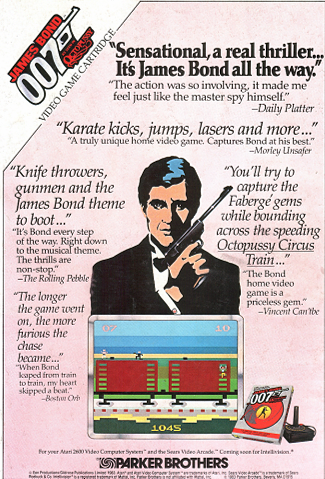

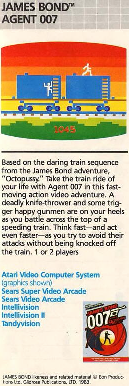

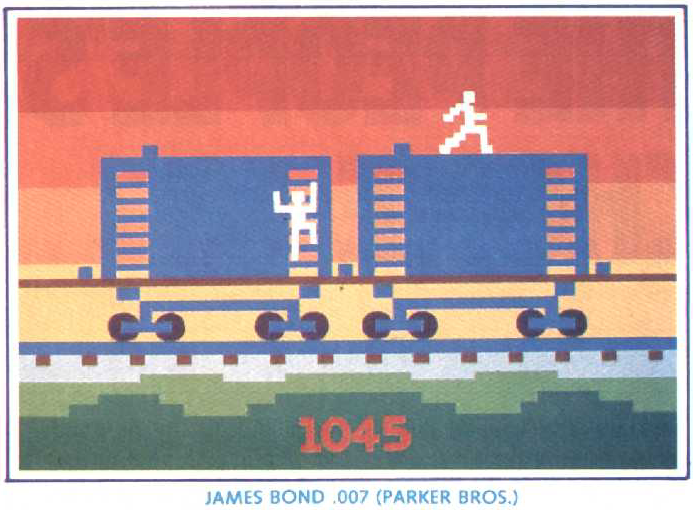

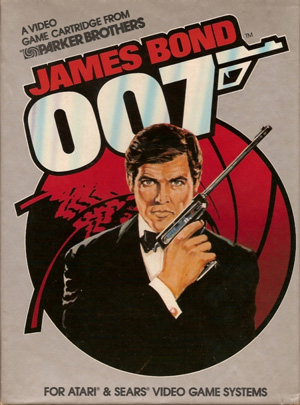

THE LORD OF THE RINGS: JOURNEY TO RIVENDELL
Early catalog screen depictions showed fences (picture #1). The graphics for these were found in the program, at byte locations $028f - $029d, along with some of the code used to display them. Picture #2 shows how they appear in the game after the missing parts of the code were reconstructed. For more information, check out this
article.



McDONALD'S
The early catalog screenshot (picture #1) resembles the (very) incomplete prototype that was found (picture #2). 2 different prototype versions have been discovered for the Atari 400/800 computers, which are far more developed (but still unfinished) - you can see pictures of them HERE.


POPEYE
2 different boxes were shown in catalogs (pictures #1 and #2). The released version is a combination of the title font from one and the art style from the other (picture #3).



SKY SKIPPER
A version of a very obscure 1981 Nintendo game. The catalog screenshot (picture #1) shows a horizontally-scrolling game (much like the arcade version), with the actual game being vertically-scrolling. There is a section of the 2nd maze that looks very similar to the catalog picture (picture #2), so perhaps it was a perspective error on the artist’s part.


SPIDER-MAN
An early catalog entry shows box art with different coloring (picture #1) from the released version (picture #2).


STAR WARS: JEDI ARENA
Early box artwork that was shown in some ads and catalogs has a less-realistic sketch of Mark Hamill's Luke Skywalker character (picture #1) than the released version (picture #2).


STAR WARS: RETURN OF THE JEDI - EWOK ADVENTURE
Announced by Parker Bros in 1983 but never released. Other than a lack of music, this game seems complete. Early on in development it was referred to as "Revenge of the Jedi Game I", and a few prototype boxes (same ones shown in some catalogs) with that name have been found. Box art was shown in a 1983 catalog (picture #1), which was the same art used for the Star Wars: Revenge of the Jedi - Game I promotional box. Tim Hildebrant (of the Brothers Hildebrant) did some artwork,
which might have been used for the final packaging (picture #2). The game was reproduced and distributed in Paker Bros-labeled cases at the New England Classic Gamers meeting in July 2003. John Bennett discovered the first copy, which was obtained from his father's friend, who worked at Parker Brothers. An article (with screenshots) appeared in the Sept/Oct 1996 issue of
"2600 Connection" but John never released a copy. A PAL version was discovered in 2001 by Marco Kerstens and
released at the Eurocon show that year. An NTSC version was discovered and released by Scott Stilphen in 2007. An early catalog screenshot (picture #3) shows the base at the bottom of the screen, instead of the top (picture #4).


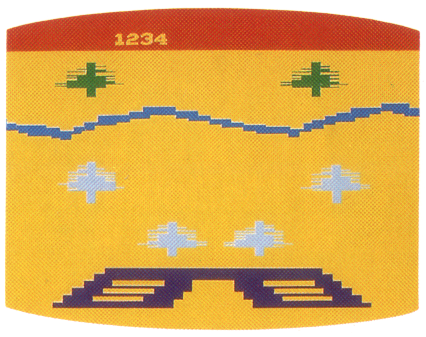

STAR WARS: REVENGE OF THE JEDI - GAME I
Pictured in a 1983 CES Press Kit along with the text: "Game play based on exciting scenes from the popular movie Revenge of the Jedi." Also shown in Parker Brothers' 100th Anniversary catalog (picture #1) as well as in an international catalog. The box for this game actually exists and it's thought some were given out as promotional "coming-soon" items to stores. The same artwork was later used for Star Wars: Return of the Jedi - Ewok Adventure. 2 different prototype
boxes were found for the Intellivision version as well (pictures #23 and #3).



STAR WARS: REVENGE OF THE JEDI - GAME II
Pictured in a 1983 CES Press Kit along with the text: "Game play based on exciting scenes from the popular movie Revenge of the Jedi." Also shown in Parker Brothers' 100th Anniversary catalog (picture #1) as well as in an international catalog. A prototype box exists (picture #2) and it's thought some were given out as promotional "coming-soon" items to stores. 2 different prototype boxes were found for the Intellivision version as well (pictures #3 and #4).

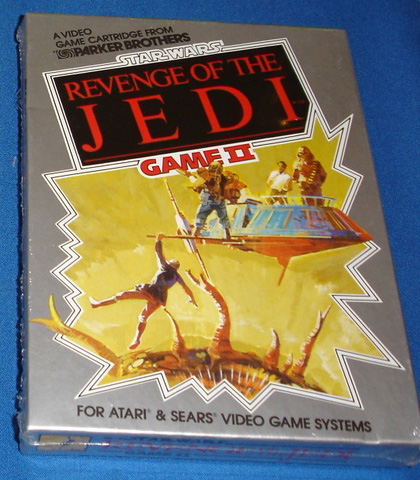


SUPER COBRA
An early catalog entry shows different box art (picture #1) from the released version (picture #2).
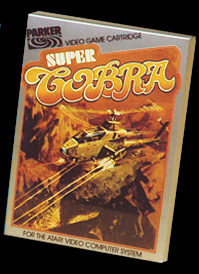
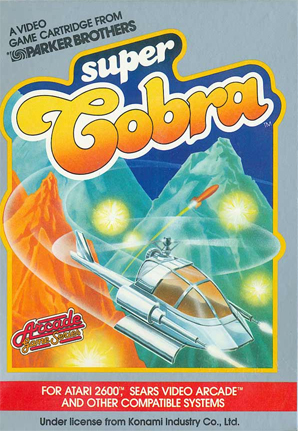
|
PROBE 2000 (NAP) |
POWER LORDS: QUEST FOR VOLCAN
Based on the Revell action-figure toys and licensed by Strongin-Mayem, International. The game was developed after the Colecovision and Odyssey 2 versions. Scheduled release date was September, 1983. A description of the game from NAP's 1983 Summer CES press kit reads: "Adam, Leader of the Lords, and Shaya, Queen of Power, are extra-terrestrial warriors who battle deadly aliens on the mystical Volcan Rock. Using lasers to fight the alien space serpent, the
Power Lords can gain entry into the rock and search its endless chambers for the glowing touchstone that activates powerful anti-alien weapons and devices." At least 2 prototypes are known to exist and and the game only has 2 screens (it’s missing the stairway screen found in the Colecovision version). A description of the game from NAP's 1983 Summer CES press kit reads: "Adam, Leader of the Lords, and Shaya, Queen of Power, are extra-terrestrial warriors who battle deadly aliens on
the mystical Volcan Rock. Using lasers to fight the alien space serpent, the Power Lords can gain entry into the rock and search its endless chambers for the glowing touchstone that activates powerful anti-alien weapons and devices."





PURSUIT OF THE PINK PANTHER
The Odyssey guys planned to bring games to the
VCS
(under the Probe 2000 label) and bought the game from U.S. Games, as reported in the October 1983 issue of Video Games. It was announced in NAP’s 1983
Summer
CES literature as "The Pink Panther", "Pink Panther: The Video Game", and "Adventures of the Pink Panther"
before NAP's marketing finally settled on "Pursuit of the Pink Panther" (as shown in the November 1983 issue of Videogaming Illustrated; an Atari 8-bit version also exists with the same name). Scheduled release date was September 1983. A screenshot was shown in the January 1984 issue of
Electronic Fun with Computers & Games (page 10) and mentioned NAP permanently cancelled it (along with Lord of the Dungeon and Power Lords) due to problems with the RAM chips used in the carts. However, according to an interview with Bob Harris in the
spring 2001 issue of Classic
Gamer, NAP hired a company to fabricate the custom RAM/ROM chip that U.S. Games had developed for Pink Panther, but unfortunately, the new chips failed and the Probe 2000 division was shut down as a result. Description: "Players control the Pink Panther as he sneakily makes his way through several screens, attempting to outwit the Inspector. For his final challenge, he must dangle from a swinging rope, steal the famous Pink Panther diamond and escape unnoticed." The Pink Panther is
the property of and was licensed by MGM-UA Home Entertainment Group, Inc. At least 6 prototypes are known to exist, along with at least 50 reproduction copies, made by Jose Artiles, Roman Sharnberg,
and Albert Yarusso. When a prototype version was graciously shared by Ken
Van Mersgergen, all the excuses for why it couldn't be publicly released
magically vanished (imagine that). See this article for more information.
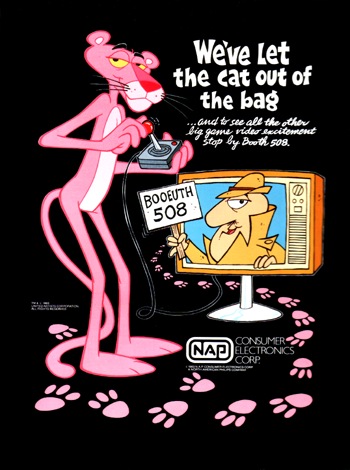




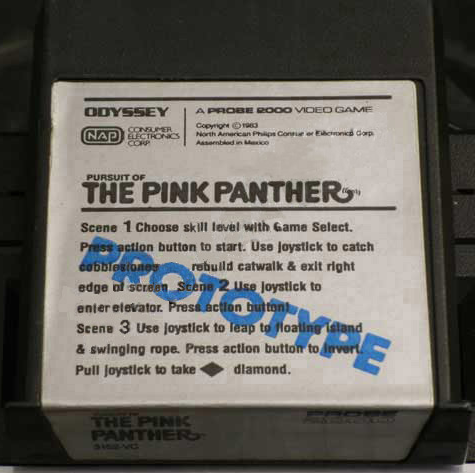




|
SEGA |
48 HRS.
Based on the movie of the same name. Mentioned in the Aug./Sep. 1983 issue of Video Games Player.


AIRPLANE!

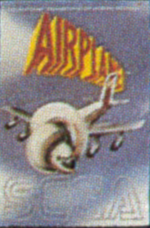
BUCK ROGERS: CAVERNS OF ZAGREB
Announced at the 1983 Winter CES. Also mentioned in the Aug./Sep. 1983 issue of Video Games Player and April 1983 issue of Creative Computing.


BUCK ROGERS: MARATHON OF ZENDA
Announced at the 1983 Winter CES. Also mentioned in the Aug./Sep. 1983 issue of Video Games Player and April 1983 issue of Creative Computing.


BUCK ROGERS: SECRETS OF ZADAR
Announced at the 1983 Winter CES. Also mentioned in the Aug./Sep. 1983 issue of Video Games Player and April 1983 issue of Creative Computing.


DRAGONSLAYER
Mentioned in the Aug./Sep. 1983 issue of Video Games Player.


FRIDAY THE 13th
This game isn’t based on the movie by the same name, but rather the nasty things that can happen to a person on Friday 13th. 'Announced at the 1983 Winter CES. Also mentioned in the Aug./Sep. 1983 issue of Video Games Player and April 1983 issue of Creative Computing. This title was scheduled for
an October 1983 release.


MARATHON MAN
Based on the TV show of the same name.

MISSION: IMPOSSIBLE
Mentioned in the Aug./Sep. 1983 issue of Video Games Player. Based on the TV show of the same name.


MUFFET
Described in the April 1983 issue of Creative Computing as a “cute cartoon game”.


STAR TREK II: THE WRATH OF KHAN
Announced at the 1983 Winter CES. Also mentioned in the Aug./Sep. 1983 issue of Video Games Player and April 1983 issue of Creative Computing. Based on the movie of the same name.
Photo #3 is of the promotional pins that were available at the 1983 Winter CES.

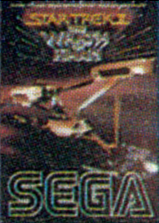

STAR TREK II: IN SEARCH OF SPOCK
This one is a bit of a mystery. It was mentioned in flyers. Why it's titled “II” and not “III” is unknown, since the second Star Trek movie was already out by the time this was shown. Most likely a typo by the artist.

SUBTERFUGE
Announced at the 1983 Winter CES. Also mentioned in the April 1983 issue of Creative Computing. The 2nd box (picture #2) has the same artwork as Sub-Scan, and given the original artwork, we're 99% sure Subterfuge was an early name for Sub-Scan.

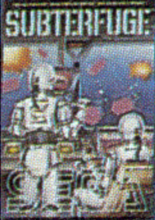

WAR OF THE WORLDS
Announced at the 1983 Winter CES. Also mentioned in the April 1983 issue of Creative Computing. The box art resembles the design of the Martian war machines from the 1953 movie.

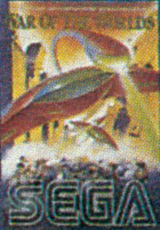
|
SPECTRAVISION/SPECTRAVIDEO |
CAVE IN
Released for the VIC-20 (pictures #2 and #3). Catalog description: “After many years of futility, your search is over! You have found the kingdom of Meese. Power and riches shall soon be yours. But remember the legend of Meese. Are there really creatures called ‘Meese-kites’? Are the ‘Magic Lips’ still hidden below? Are you brave enough to find out?”


CHINA SYNDROME
The 1st artist rendering screenshot (picture #1) is from an early 1982 catalog, and looks nothing like the actual game. A later version (picture #2) is from a later catalog the same year (titled “Meet the Challenge Vol II 11/82”, which is accurate to the actual game (picture #4). The box art is completely different as well (picture #3).


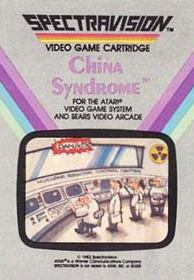
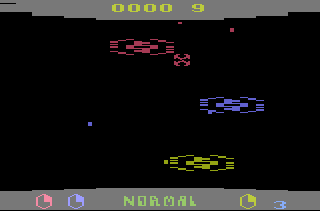
COMPUMATE
This is a 42-key touch pad-style computer add-on that adds 16K ROM, 2K RAM, a 2-channel + 2 octave music composer, BASIC, and Magic Easel. The unit looks like a small keyboard connected to a cartridge, which has 2 cables that connect to the controller ports. It has 3 function/display modes: Text (which runs BASIC), Graphic (which runs Magic Easel) and Music. Magic Easel allows you to create photos (with up to 10 different colors) and animations (up to 9 frames) using
the joystick). Originally sold for $79.99. This was once quite rare to find until a large quantity surfaced in Venezuela in 2010. The photo shown in the company flyer shows a prototype version (pictures #1 and #2), which is different from the released version (picture #3).



DRIVE ‘EM KRAZY
Version of the (very obscure) Status Games arcade game. Catalog description: “A Spectravideo exclusive! Now the popular arcade game from Status Games comes to the home with al the action of the original arcade version! Drive ‘em Krazy is a fast action car chase that is sure to drive you crazy!”
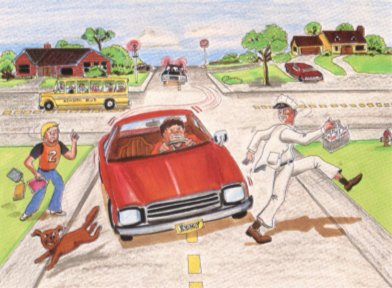

EAGLE MOUNTAIN
Catalog description: “Far away from the civilized world high above the clouds likes ‘Eagle Mountain’. Many stories are told by the natives about the great treasures hidden in a secret labyrinth high on the peak. No one knows for sure how many brave souls have attempted the journey up the Eagle Mountain – none have returned. We dare you to take the journey!”

GLACTIC TACTIC
Announced at the 1983 Winter CES. Catalog description: “Intergalactic war has broken out between those troublesome ‘MORPULS’ from the planet ‘TZORIS’ and the ‘MIRPODS’ from the planet ‘MAMZER’. As a SPECTRA-WARRIOR, your mission is to protect the ‘GLACTIC TACTIC’ border observation station, and prevent contact between the MORPULS and MIRPODS. The ‘GLACTIC TACTIC’ is protected by a high energy force field and bi-directional laser cannons. The entire universe is depending on you!”




MASTER CYLINDER
Catalog description: “The planet Spectra has enjoyed many years of peace and prosperity since the evil Morpils from the Planet ‘Tzoris’ were defeated. But now an evil force permeates the galaxy. The long range sensors have detected a strange war machine in the Delta Quadrant. As a member of ‘Legion of the Chosen’ it’s your duty to destroy this unknown enemy before it can enter the ‘SPECTRASPHERE’. Little did you know that this mysterious force is the evil ‘Master Cylinder’.“

PROTOBOB
Judging from the artwork, this looked to be a variant on Surround. Catalog description: “Strategy is the name of the game! Challenge your opponent or the computer to fill the screen with PROTOBOBS. Capture the majority of the battlefield to win. Endless possibilities and combinations of play are sure to make this game a classic!”


ROMPER ROOM SERIES
A series of early learning educational programs. Titles were DoBee’s First Alphabet, Romper Room’s Countdown to Fun, and The Street Where You Live. Catalog description: “Spectravideo is pleased to announce the official Romper Room series of early learning educational programs. Join ‘DoBee’ and his friends in teaching pre-schoolers about numbers, the alphabet and much more. Our experts use the latest in proven educational methods to educate and entertain children. These series of programs will
add new value to your computer system.”

SECTOR ALPHA
Featured “Spectra-Sound” (speech) – first in a series of planned games. Catalog description: “At the core of army defense command lies ‘Sector Alpha’. Equipped with the latest computerized defense console, your mission is to repel the invading enemy. The attack force is both by air and armoured land assault. Only Sector Alpha remains to save the battle!”


TIME SCAPE
Catalog description: “The following message has been sent to SPECTRA COMMAND: ATTENTION ALL INHABITANTS OF SPECTA ‘We are the Shieppers from the planet Yutz. Our planet can no longer sustain our life form, so we have chose the planet SPECTRA as our new home. We have placed two metanomic bombs somewhere in the future or past of your planet. If you surrender immediately, your lives will be spared and you will become our slaves. If you do not respond in 24 hours – you’ll be destroyed!’ As a member
of the Legion of the Chosen, you are the only one capable of using the time penetrator to save Spectra!”

VERTINKO
Variation on Pachinko. Catalog description: “The famous oriental game of ‘Pachinko’ comes to VCS with an interesting twist! Catch the pellets as they randomly fall from the grid. Only true skill can meet the challenge of the fast paced game.”


VORTEX
Shown at the 1983 Winter CES, along with versions for the Atari computers, Vic 20 and TI 99/4A, and described in the April 1983 issue of Creative Computing as requiring typical red/blue 3-D ‘movie’ glasses (LINK).
Gameplay involved “navigating your ship through a meteor shower while defending yourself from alien attack ships” (pretty much verbatim from the catalog description). According to a press release, there was a pending patent for this game. The artwork bears the signature “M. Fong”. Catalog description: “Introducing the world’s first real 3-D video game for the home! Put on your special ‘Spectra-Vision’ 3-D Glasses and get ready for the most unusual game experience ever! Maneuver your spectra
shuttle through the meteor showers and repel the Hostile Invaders in this action packed thriller. Once again, Spectravideo adds a new dimension in computer game software!”
|
STARPATH (AMIGA) |
DRAGONSTOMPER
The original name for this was Excalibur. Picture #1 shows the artwork for it. Picture #2 was the early artwork for DragonStomper (note that the title is two words). Picture #3 is the released artwork.



SUPERCHARGER
A prototype version (picture #1) exists, which is different from the released version (picture #2). This is an add-on device that improves the Atari VCS memory, graphics, and sound capability. The unit itself contains 6K RAM and 2K ROM. ROM is in top 2K and RAM is banked in lower 2K. Games were distributed on cassette tape. By plugging the Supercharger into the VCS and connecting its cable (with a standard 1/8" jack on the end) to a standard cassette tape player, games could be "loaded in" to
memory. The Supercharger unit contains 2K of ROM, but more importantly it adds an additional 6K of screen RAM to the VCS (a huge improvement over the hardware's 128 bytes). Phaser Patrol was also included. The unit initially retailed for $70, but in January 1983 the price was reduced to $45.


SWEAT: THE DECATHLON GAME
2 different versions have been found. The first (picture #3) was on the Cyberpunks' compilations, "Stella Gets A New Brain" (1996 and 1999 respectively. Only 350 copies of the original release were made). A second version was discovered by Scott Stilphen and shown at CGE2K4 (picture #4). Unfortunately the game was never finished. With the merger between Epyx and Starpath in 1983, the concept was reborn as Summer Games. An early marketing photo (picture #1)
ended up being a picture of the later prototype version that was found (picture #4); the earlier version has a smaller athlete (picture #3). The 2nd photo (picture #2) was on the Stella Gets A New Brain CD but it’s unknown where it originally came from. For more information go HERE.




|
TECHNOVISION (VTECH) |
LOCOMOTIVE
Similar to BurgerTime. The picture is from a brochure. Shown at the 1983 Summer CES show. Description: "You're a prisoner in a Sorcerer's train factory. The only way out is to build your own train. Put all the right parts together in the right order. But watch out! Even the tools try to stop you. They come to life and attack. Hammers, wrenches, and nails fly at you from every angle and you have only an oil can to give them the slip. In LOCOMOTIVE!"
VTech released a version for their CreatiVision system.

|
TIGERVISION |
CHANGES
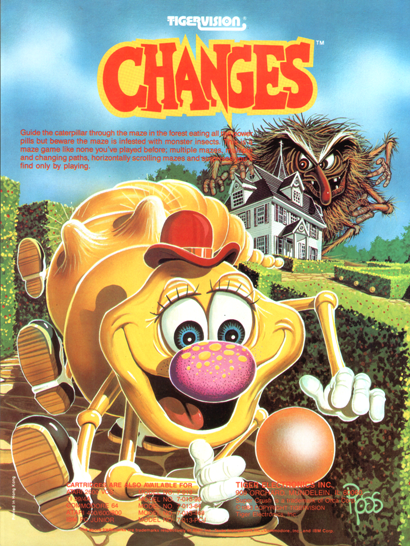

INTUITION
Pat Contri (of #CUPodcast) claims a Mid-West employee from Half Price Books contacted him in January 2022 to say someone just traded in a prototype of the game and planned to sell it the 20th of that month. According to the employee, the person who sold it to them said it belonged to her late husband. Photos of the cart and a screenshot of the game (pictures #2 and #3) appeared in Pat Contri's September 14th podcast (LINK). The end label of the cart appears to have a Miner 2049er label underneath it. The prototype is currently in the possession of an unnamed collector in California (very likely Jose Artiles), who pade $10k for it.




SCRAPER CAPER
"After Miner 2049er, I worked with Curtis Mikolyski while we attempted to create an even better game than Miner 2049er. It was pretty hard trying to top ourselves. The licensees of Miner were crying out for another game."
Two different versions of Scraper Caper were actually programmed. According to Bill Hogue in the first version,
"We came up with a vertical scrolling game we called Scraper Caper. We did a fair amount of work on it. It had Bounty Bob leaving the mine and moving to the big city as a fireman. He'd also lost a little weight! The game started outside a tall building on fire. A hysterical woman would flag down Bob and give him instructions for going up to her apartment to save something valuable. Bob would salute and then he'd be under your control. You'd go in the automatic door at the base of the building and start exploring. We even had the artwork done for the game before it was finished (picture #2); Scott Ross created this artwork for ads teasing the public with Bounty Bob's new occupation (picture #3) - that's the evil Yukon Yohan lurking in the shadows. Notice the donkey with a teardrop in the background!"
This version was abandoned because the concept didn't seem to pan out as well as Bill had hoped. The second version was more like Crystal Castles. In this version, Bounty Bob was hopping around on three-dimensional framework with angry fireballs after him. This version actually got much farther before also being cancelled due to the concept no working as well as Bill had hoped. Later, Bill admitted that he had set his standards too high and that both games should have been released. Sadly it is believed that both versions of Scraper Caper are lost to the ravages of time. In July 2021, Curtis found some promo footage that was created which shows both versions of the game (see video)!



SKY LANCER

SUPER CRUSH

|
U.S. GAMES (QUAKER OATS) |
EGGOMANIA


TRAIL OF THE PINK PANTHER
|
ULTRAVISION |
AIR-SEA ATTACK
Shown in a 1983 CES Press Kit. This was likely the early name for Sea-Hawk, (which was later released by Sancho and others).

COMPUTER VIDEO SYSTEM


EXPANSION MODULE
Shown in a 1983 CES Press Kit. This was the planned expansion module for the Computer Video System to allow one to play Atari VCS carts (and compatible controllers). Suggested retail price was either $79.95 or $77.95.

GAME CONSOLE
This was to be an all-in-one portable game system that featured a 9" vector-scan b&w high-resolution monitor, 64K ROM, stereo sound, and headphones, and was compatible with their VCS-compatible series I and II games. It ran on AC or DC (with a self-charging battery) and 2 controllers. First shown in the November 1982 (pg. 11) issue of
Electronic Fun with Computers & Games.

QUEST FOR THE IDOL
Shown in a 1983 CES Press Kit.

SPIDER KONG
Shown in a 1983 CES Press Kit.

|
UNITRONICS (UNITOYS) |
EXPANDER SYSTEM
Shown at the 1983 Winter CES. An unreleased add-on peripheral similar to the Supercharger, except that it includes a built-in tape deck, and the entire unit plugged into the
VCS's cartridge slot. Games specifically developed for the Expander were to take advantage of the additional memory (16K) to produce better graphics and enhanced game play, and were to be sold in cassette format and retail for under $15. High scores could be saved via a feature called Gamescore. The system had
a cartridge slot on the top for use either with standard VCS carts or an optional 16K memory expansion. Other options included special Gamealbum cassettes which contained four 4K games. The screenshot in the first picture appears similar to that of Radio Shacks' Color Computer - same color scheme and maximum of 32 characters per line. Btw, the man holding the joystick in the second photo is Paul Walters.
Unitronics was a division of Unitoys, Inc.
The Expander II had all the features of the Expander I and included its own 8K BASIC cassette program, Expander BASIC (though one press release stated it was built-in to the keyboard...), but allowed for optional devices to be connected (Expander Keyboard, Expander Printer, and Expander Modem). In addition, they had plans for optional equipment like a Speech Program, which turned the system into a Speech Text Synthesizer, along with a Home Improvement program, plus VideoComp Command joysticks. Note that the literature mentions a 64-key keyboard, but a 55-key keyboard is shown.
Several of Unitronics' cassette games were to be developed in a joint venture with ET Marketing, which was a coin-op manufacturer in Arizona. Some of the tentative titles were:
Dazzler
Desert Race
educational programs
Expander BASIC
Home Improvement
Kaleidosketch
Leprechaun
Pirate's Treasure
"Space Invaders clone"
Speech Program
Those Little Buggers (AKA Buggers)
Treasure Hunt
Tugboat
Uni-Calc


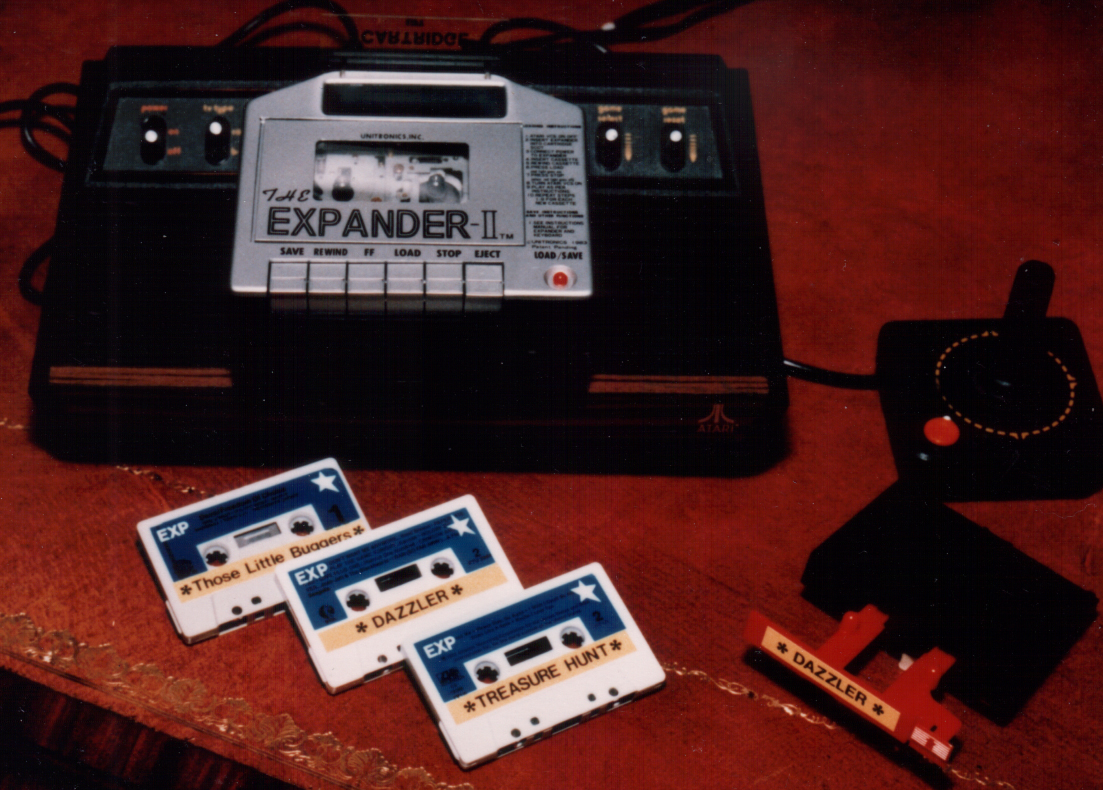

SPACE ASSAULT

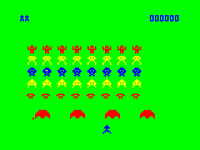
|
VENTUREVISION |
INNERSPACE
This game was to become the 1st sequel to Rescue Terra I. It was later sold to Imagic, and renamed Laser Gates. A description of the game from the company's 1983 CES press release reads: "You have reached Terra I and must now fight your way to a centralized computer system located at the planet's core. The objective of the game is to destroy the computer system and return control of the planet to the colonists. Your task will involve a great deal of skill and an element
of luck." A prototype was found by John Hardie in 2010 that shows the VentureVision logo onscreen, where Imagic's copyright is.


SOLAR DEFENSE
This was the 2nd sequel to Rescue Terra I.
The first screenshot was shown in both the April 1983 issue of
Videogaming Illustrated
(pg. 8) and in the
May/June 1983 issue of Tilt. A
description of the game from the company's 1983 CES press release reads: "You
have traveled to Terra I and destroyed the computer system thus returning
planetary control to the colonists. Terra I is now shipping Zenbar crystals to
Earth's solar reactors for energy conservation. Solar Defense is a 4K game
depicting action on one of Earth's orbiting solar reactors. The station is under
heavy alien attack and you have all you can do to defend it. Help is on the way
if you can hold on long enough." From Dan Oliver:
"I left before it was completed but it seemed pretty darn cool. Used paddles I believe, 4 person game I think. Maybe a bit like Breakout, or an inside out War Lords, and probably great audio. I don't know what happen to the game after that. Certainly VentureVision wouldn't have released it, 0 cash. Hopefully they gave the rights to Robert. It'd sure be cool to play it now, finished or not. It was definitely at least playable last time I saw it."
|
WIZARD VIDEO GAMES |
FLESH GORDON

THE TEXAS CHAINSAW MASSACRE
A prototype version exists (picture #1) that is completely different from the released version (picture #2). It's not so much a prototype but rather the original version of the game that was intended for release. It's easy to see why it wasn't, as there's nothing horrifying about 2 stick figures running around in Pengo's Technicolor Dreamcoat. If you've ever wondered why the box artwork on the released version shows someone shooting Leatherface (when the game's victims aren't armed), a prototype
box was found with the same artwork (picture #3), so the artwork was definitely intended for the original version.



|
XONOX (K-TEL) |
HERCULES VS. THE TITANS




|
ZIMAG |
CAT-NAP



COLLISION COURSE
The catalog screenshot (picture #1) is accurate to the Atari 400/800 version that was released (pictures #2 and #3). Catalog description: “It’s you against dangerous mine fields and killer satellites. Your mission – to protect cargo ships loaded with precious gems as you escort them back home from a five year mining trip on the moons of Zeta III. Things will be a lot easier when – if – you get through this perilous section of the galaxy. You’ll also have to contend with mysterious time beacons
along the way. Can you believe your eyes as time itself seems to speed up and slow down?”


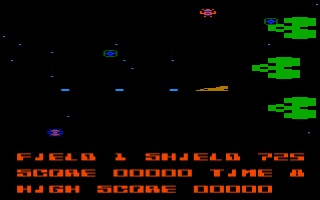
KERPLOP
Catalog description: “You wouldn’t want to drop water balloons on poor, unsuspecting citizens, would you? You would? Then climb aboard Kerplop’s mischievous hot air balloon, float high above the city and let ‘em fly. Kerplop! Sorry, mister. Kerplop! Pardon me, lady. Isn’t this fun? Funny, that cop you just hit doesn’t seem to think so.”


PIZZA CHEF
Aside from a catalog mock-up screen (picture #1), a pirate copy surfaced under the CCE company name (picture #2). Catalog description: “Mama mia! It’s dinner time at Mama Zabazoni’s and the pizza chef just stomped off without so much as a ‘ciao’. Uh-oh. There’re a lot of hungry customers out there waiting to chow down. And they’ve only got so much time. Why not help Mama out and make a little dough? Here come the orders – tomato, cheese and onion. That’s easy enough. Ham-onion-olive. The pace is
picking up. Mushroomonioncheesehamolive – whoa! How are you going to keep your combinations from getting all mixed up?”


SPACE MINES
Mentioned in a 1983 catalog, and in a 1983 Dutch video game review book (as a
VCS title). This was was the tentative name for Collision Course.
The cool artwork is actually from a 1981 Roger Corman movie called Mindwarp
(picture #2).

